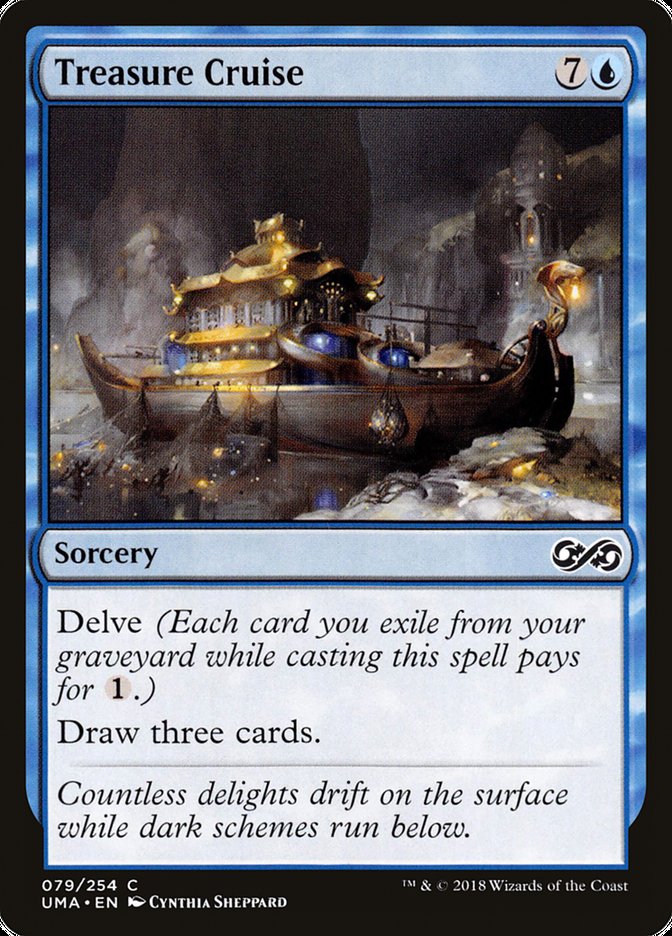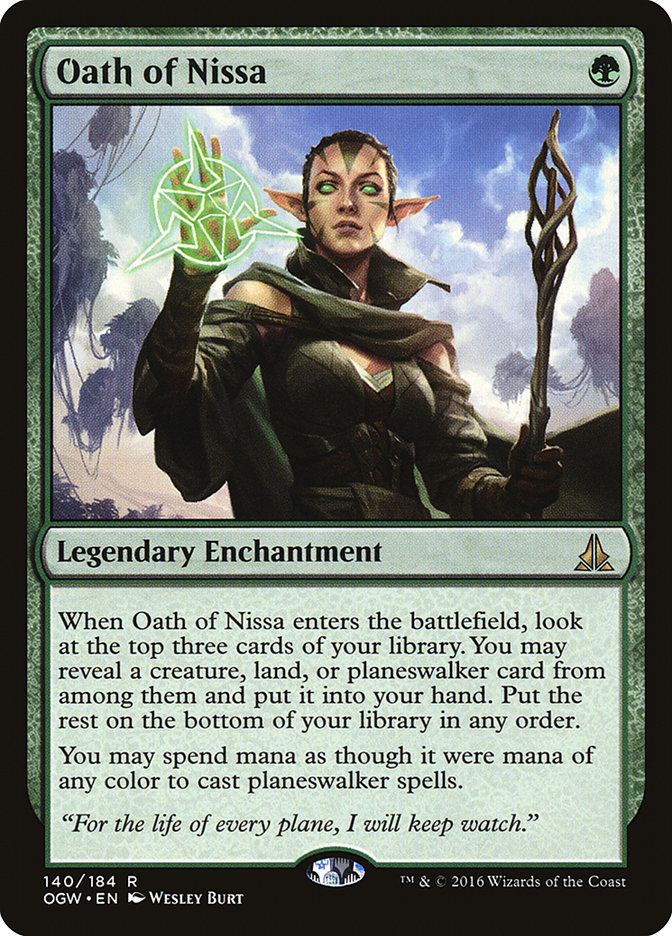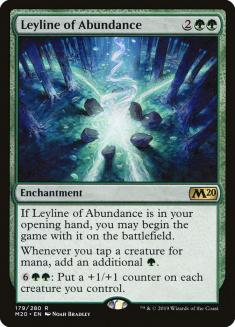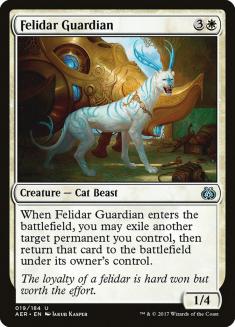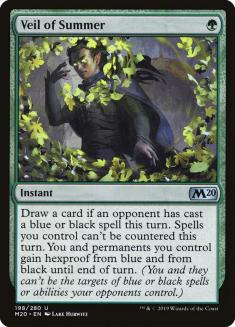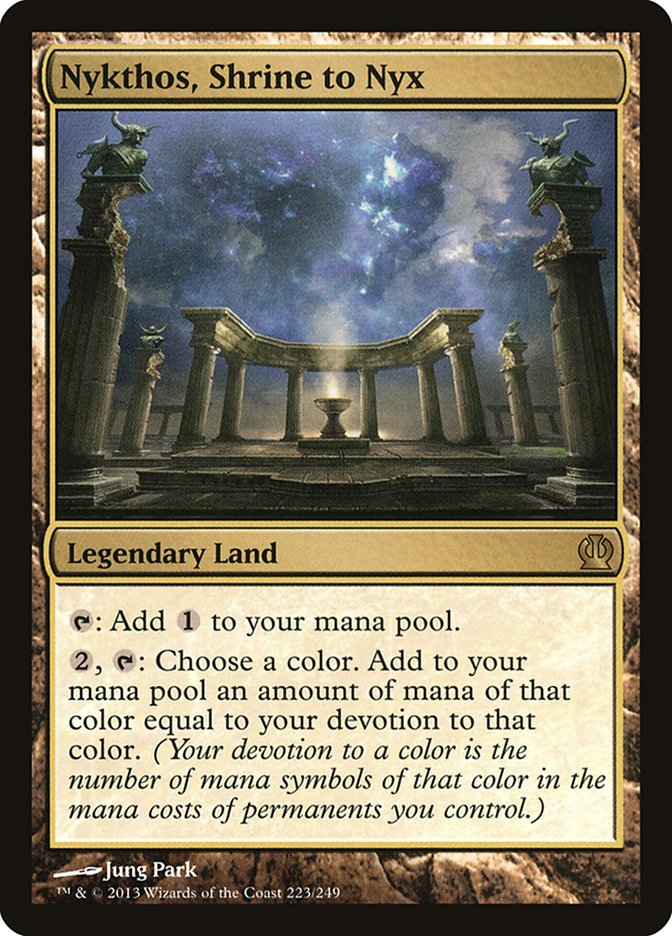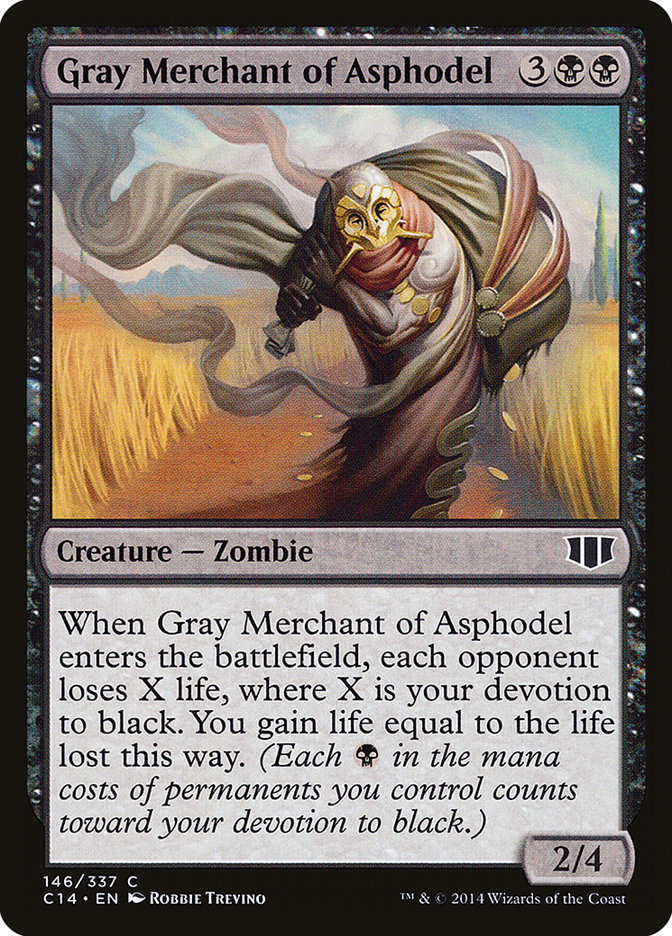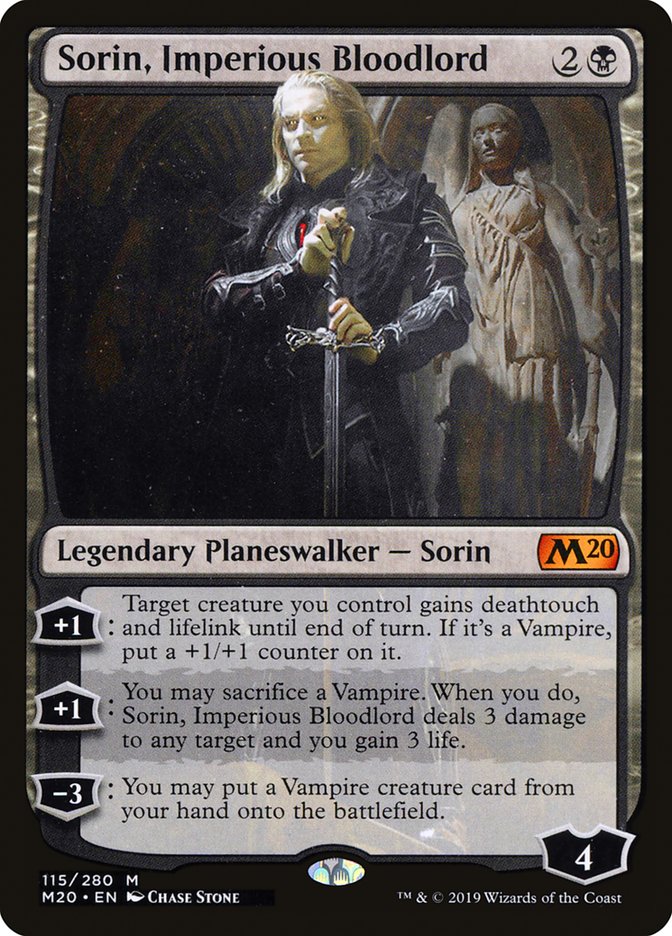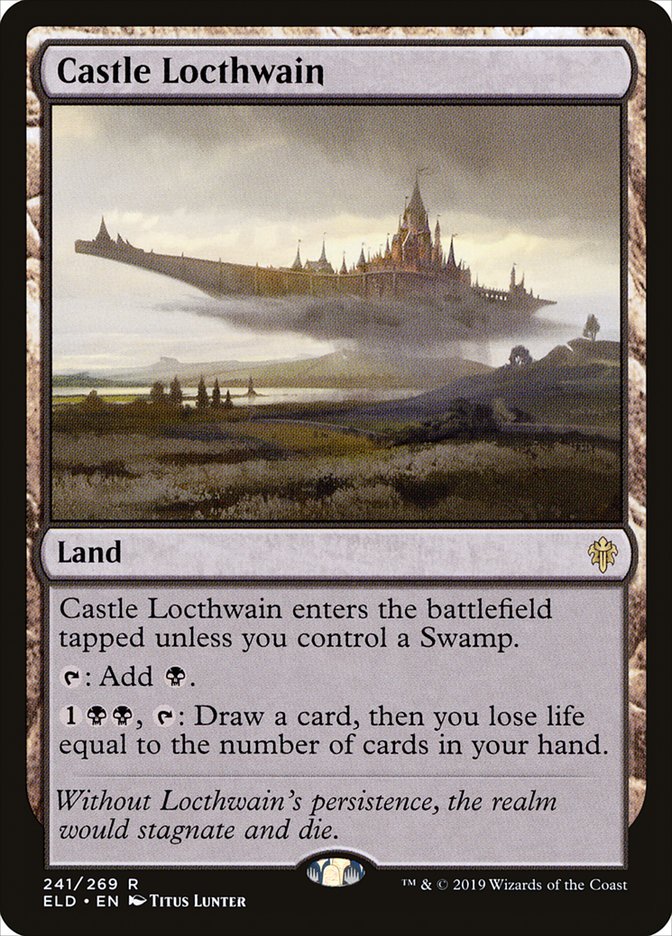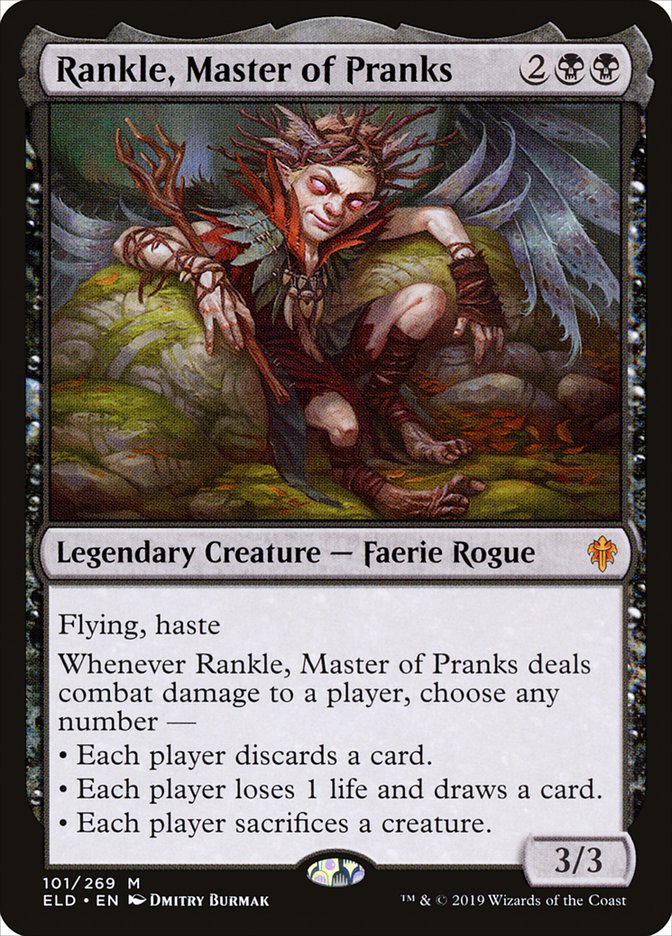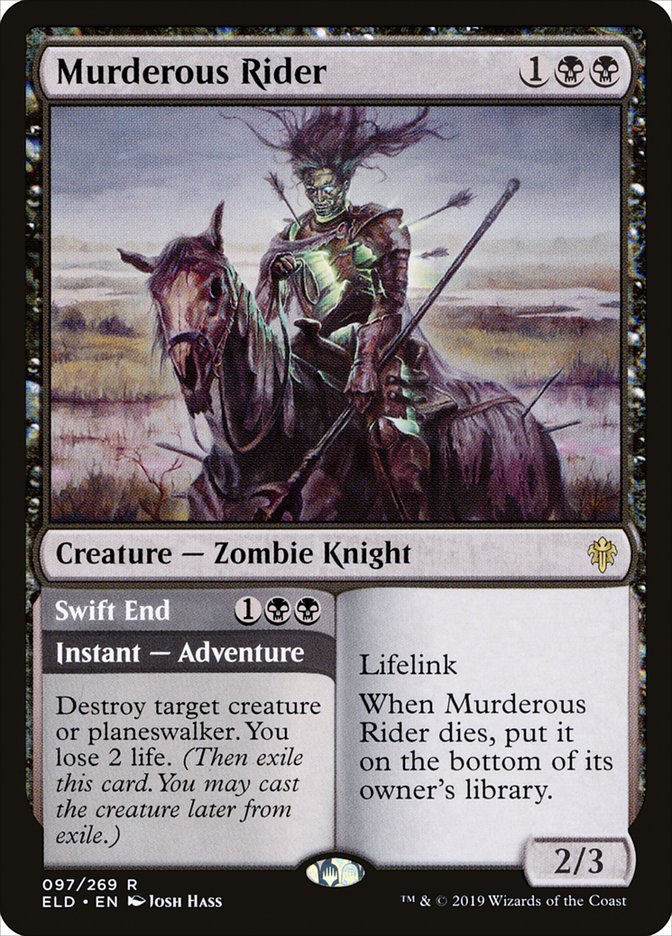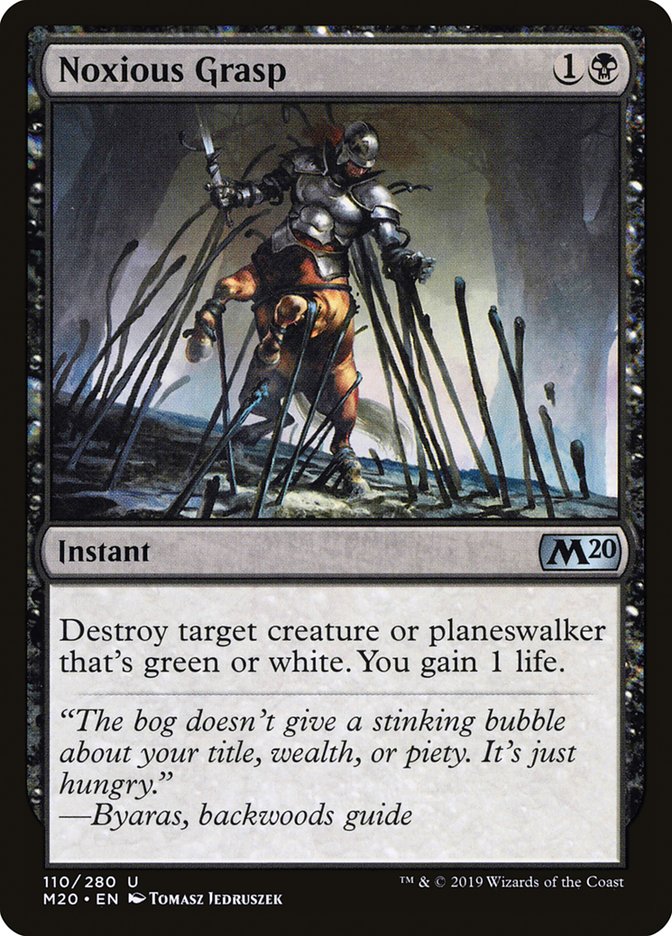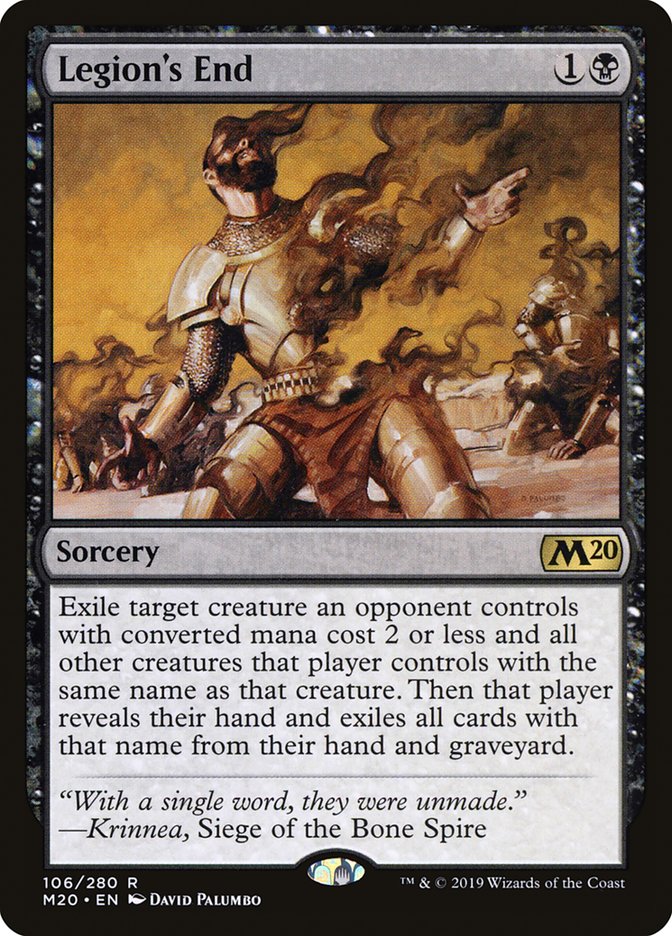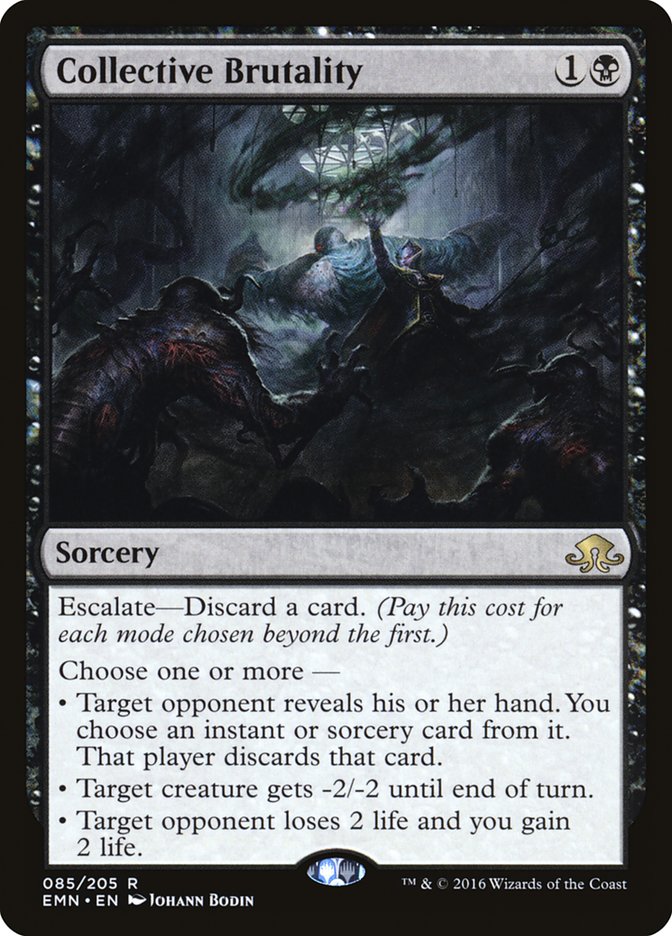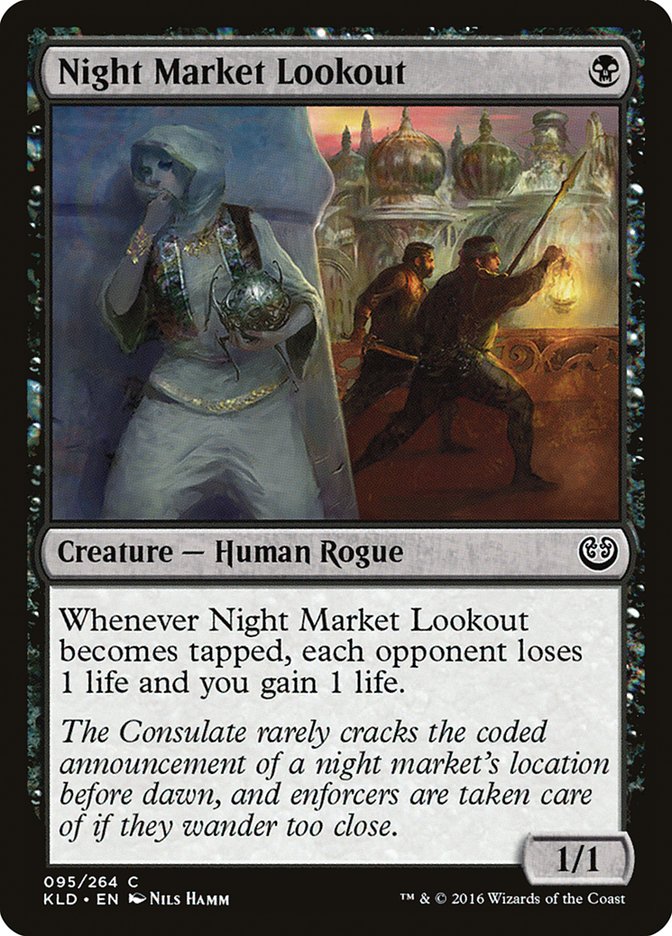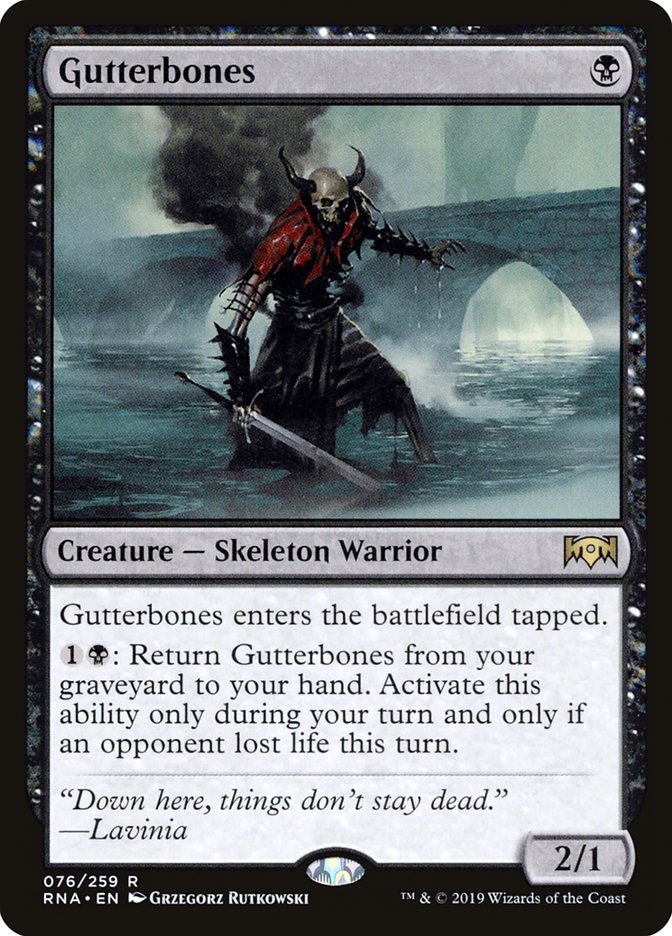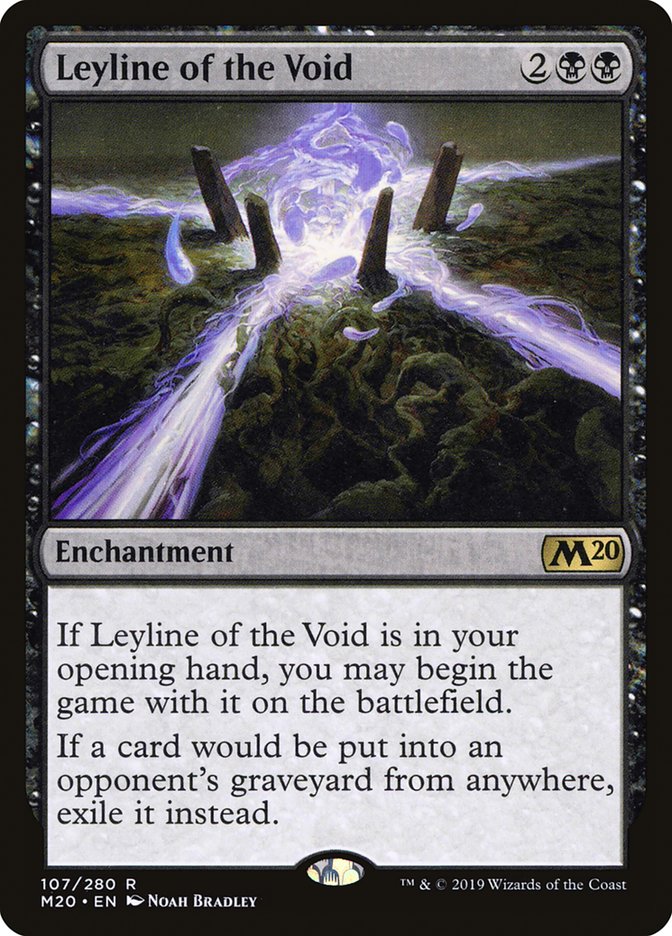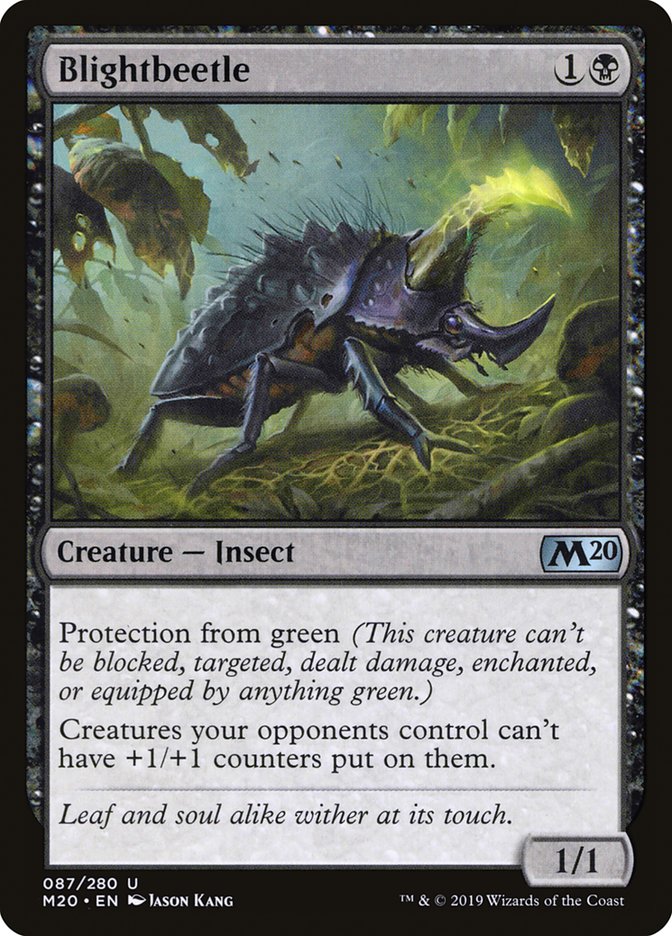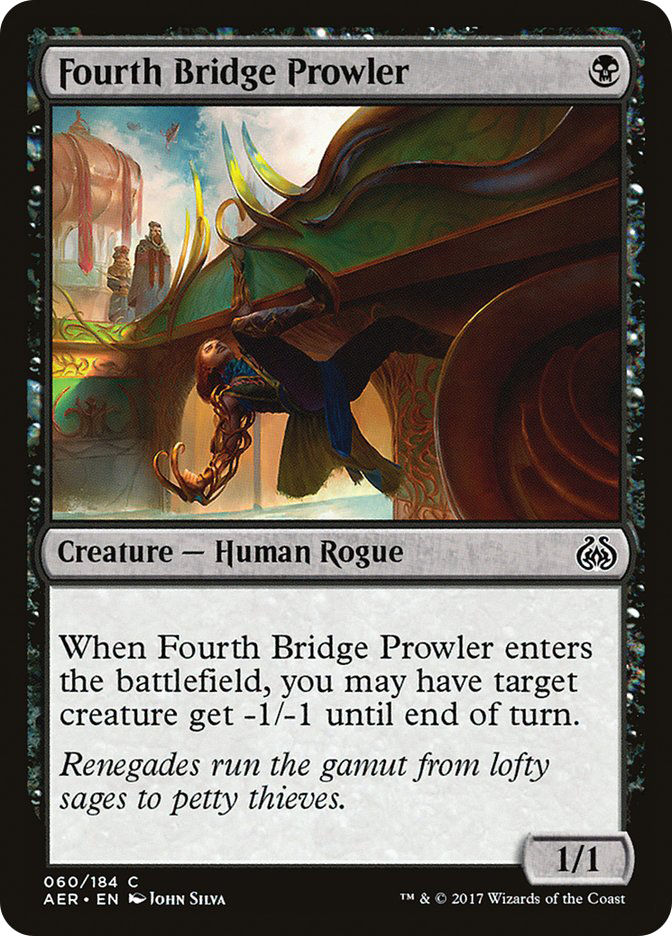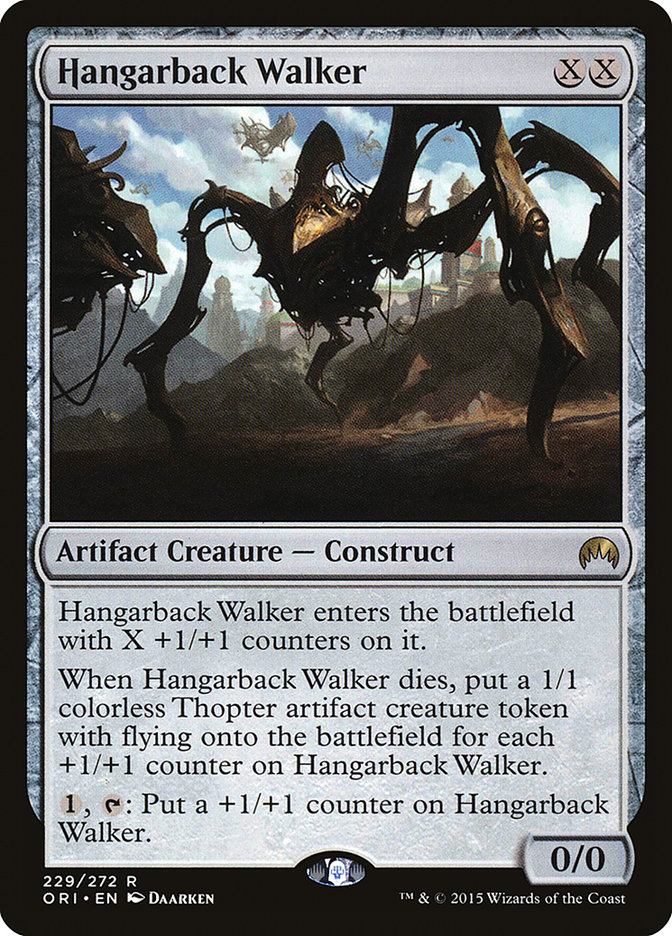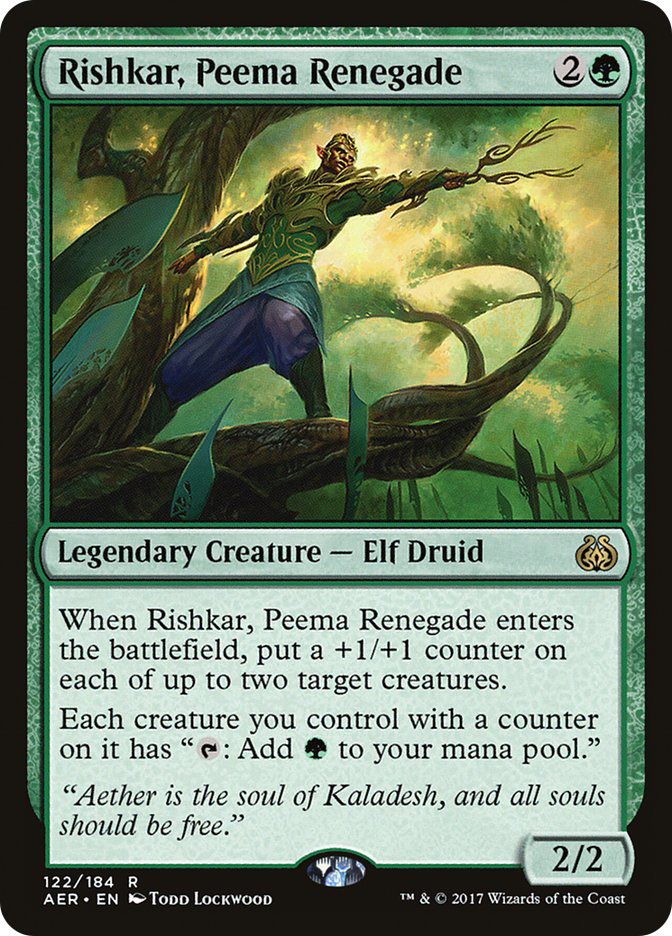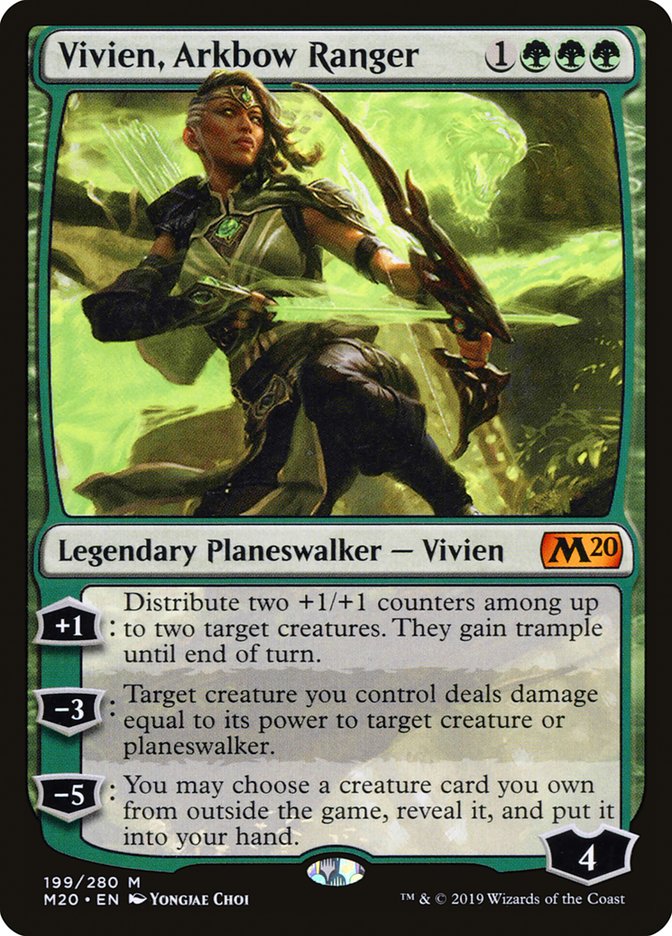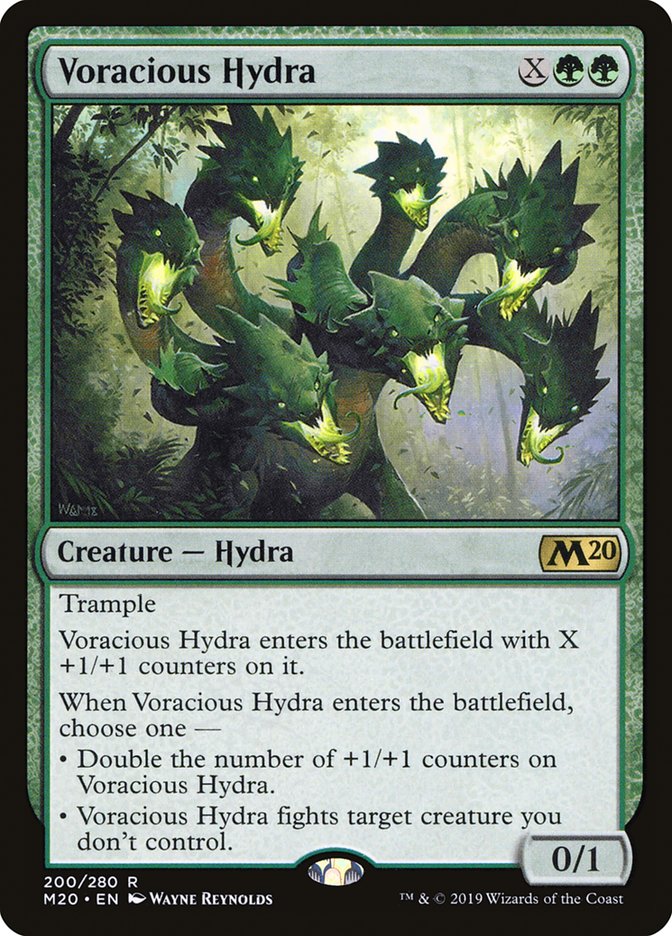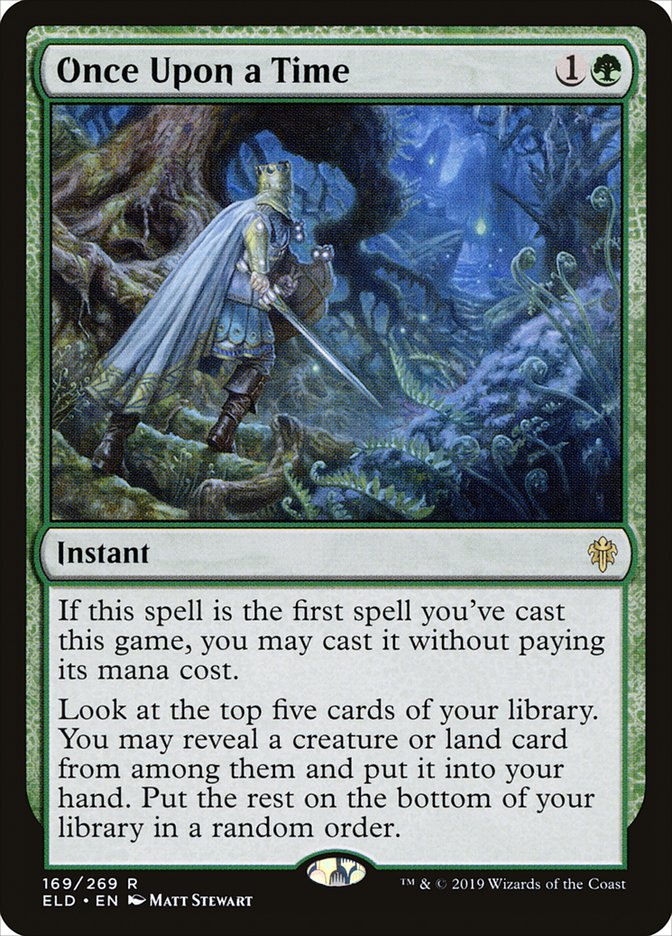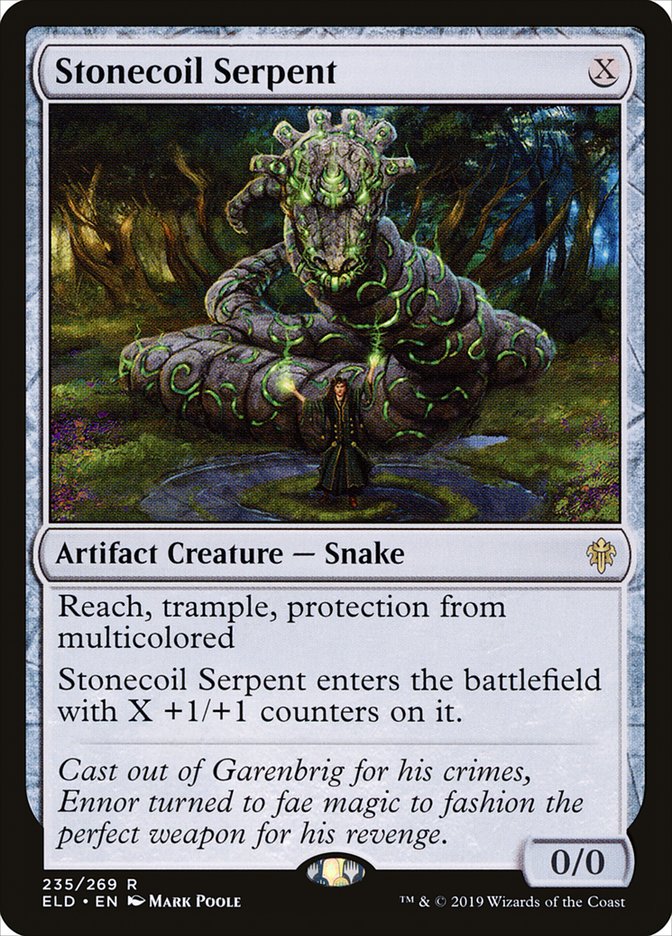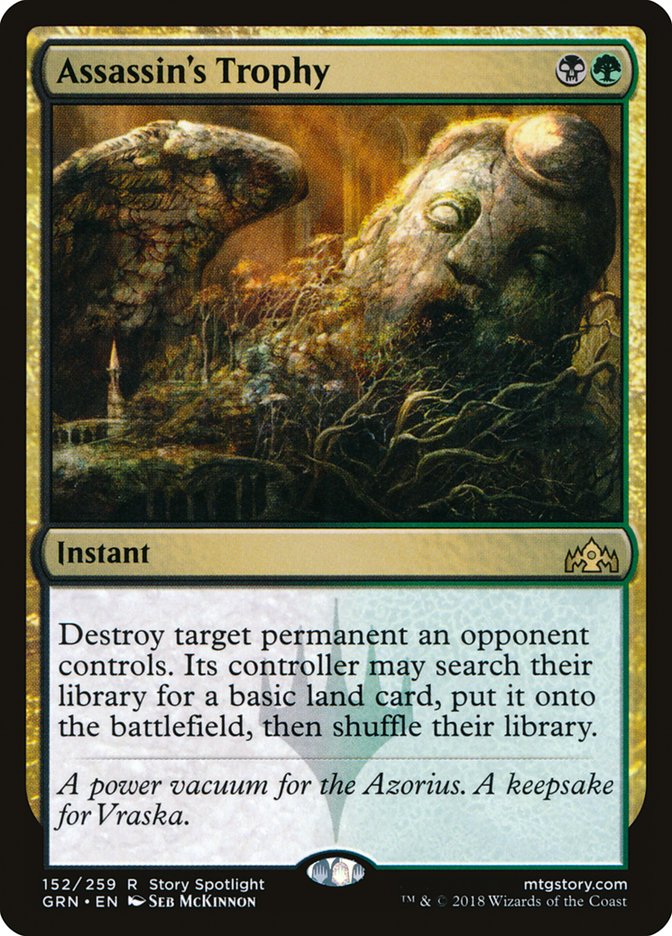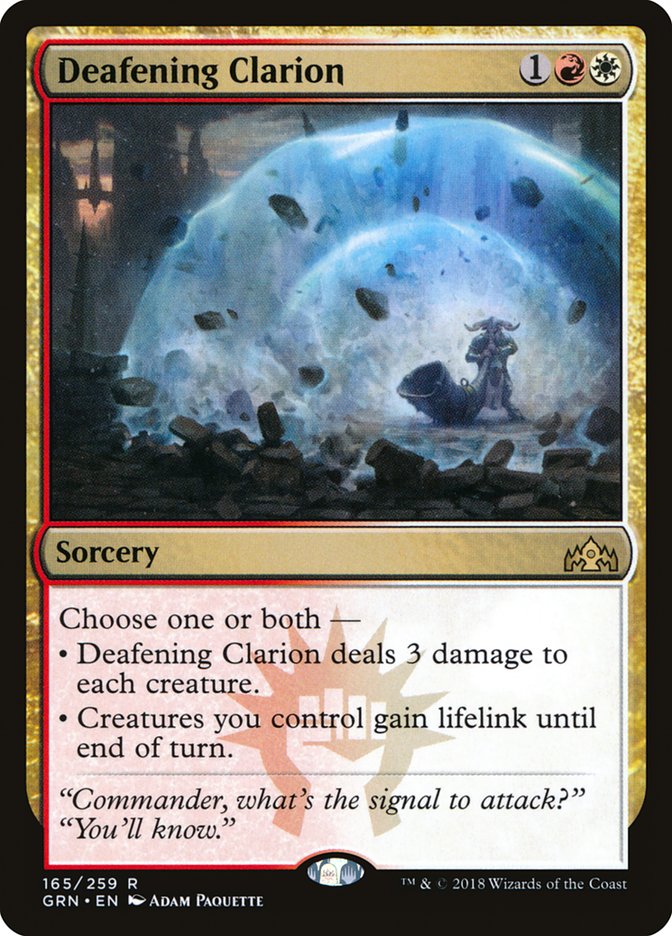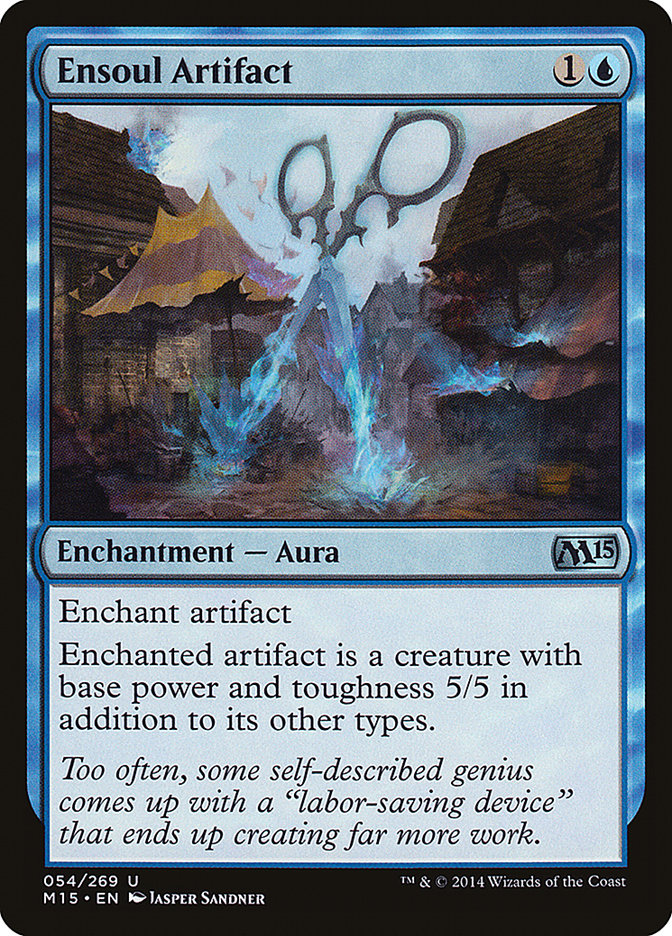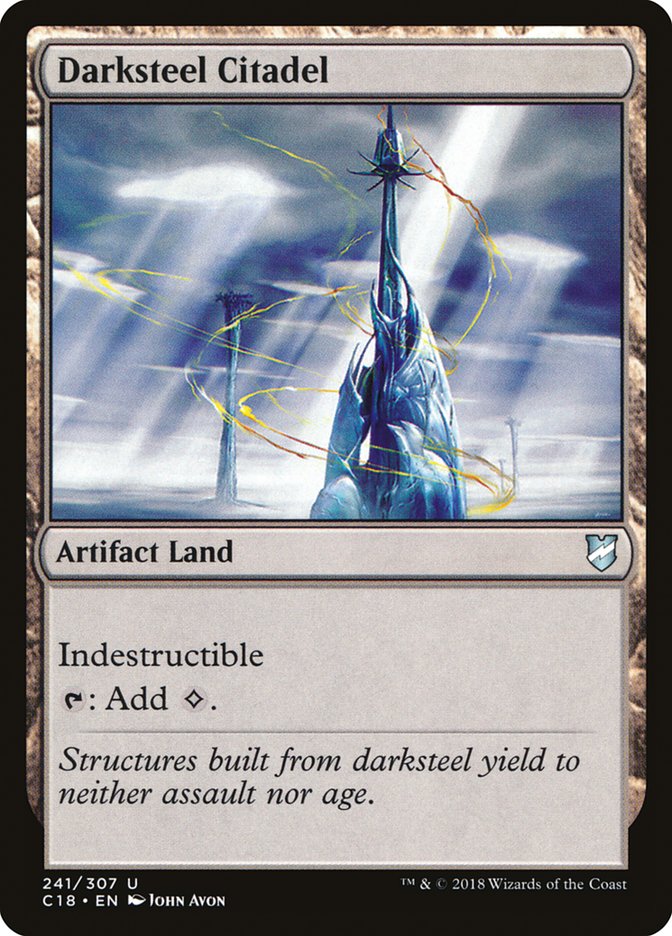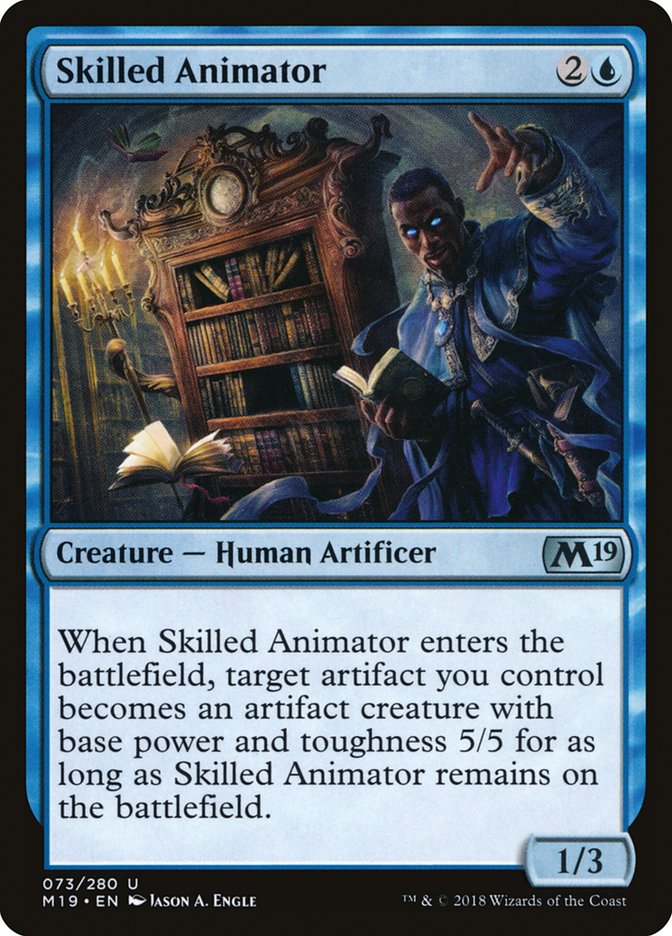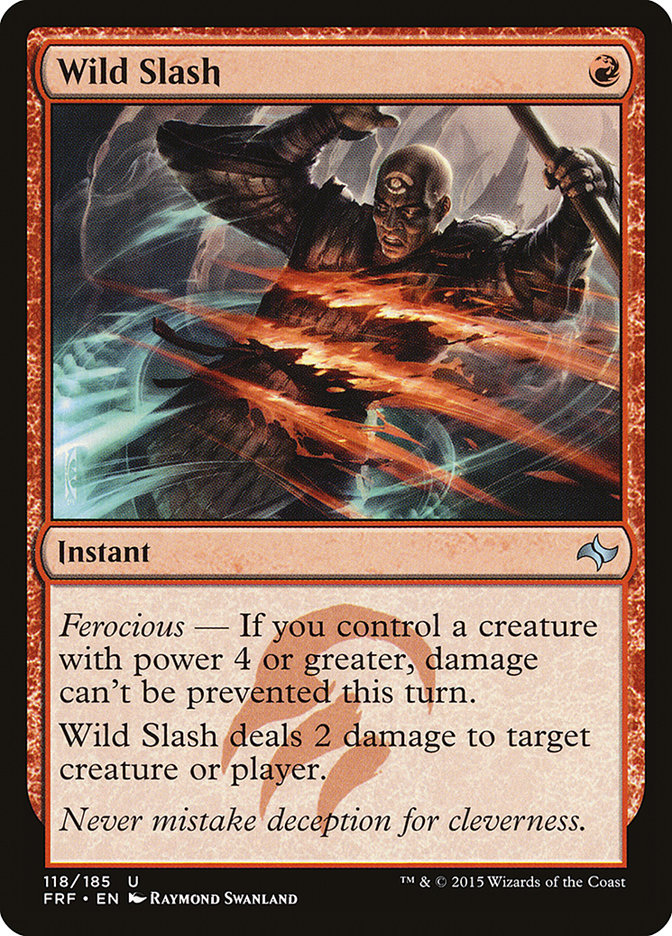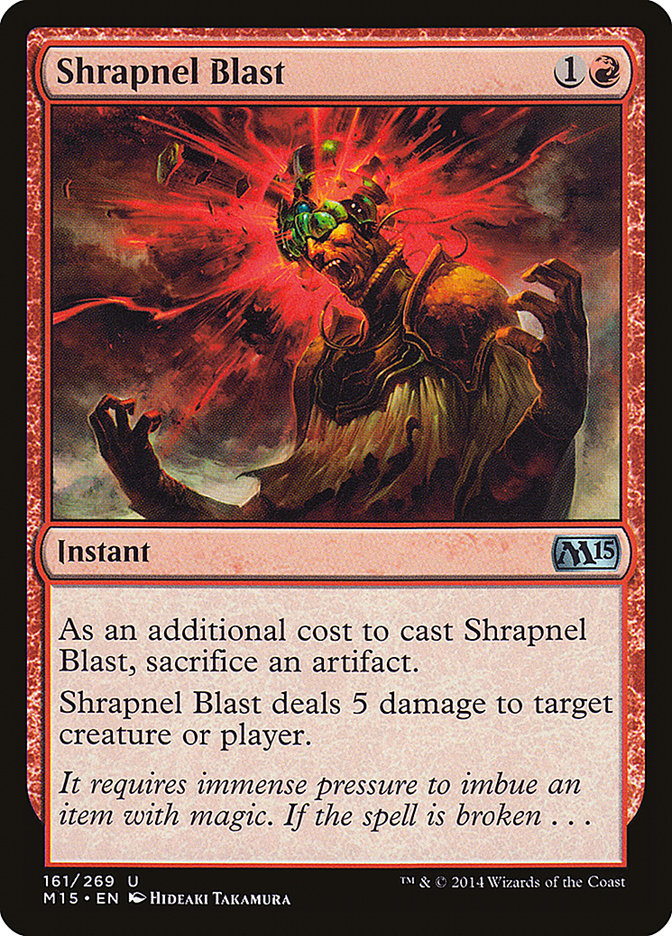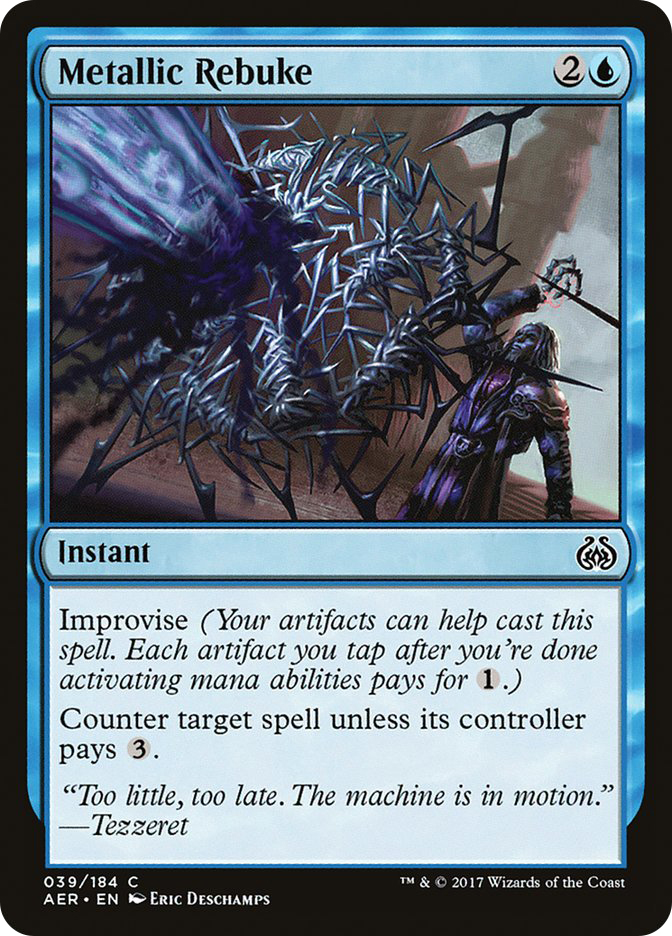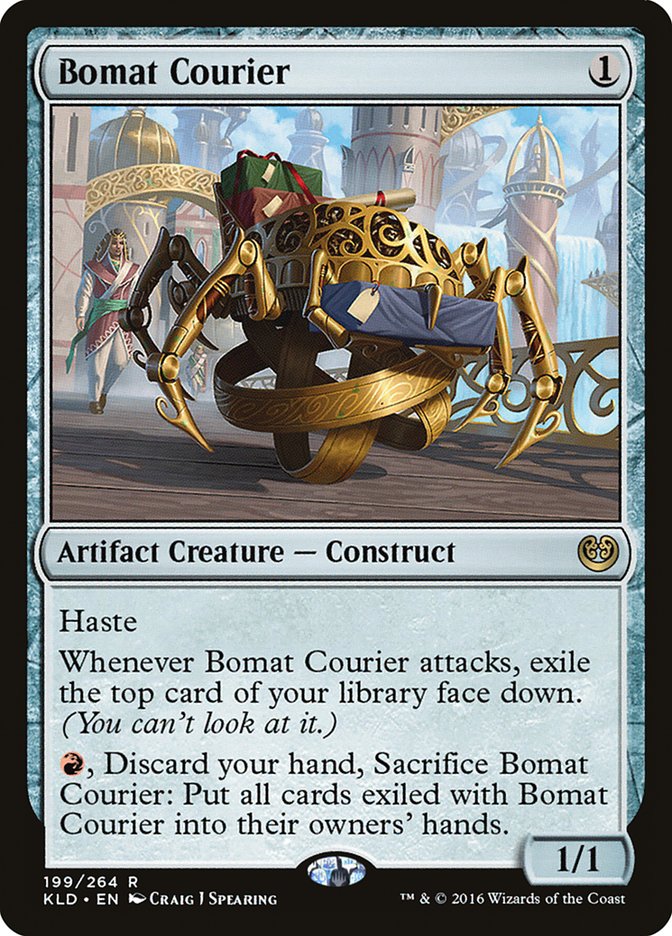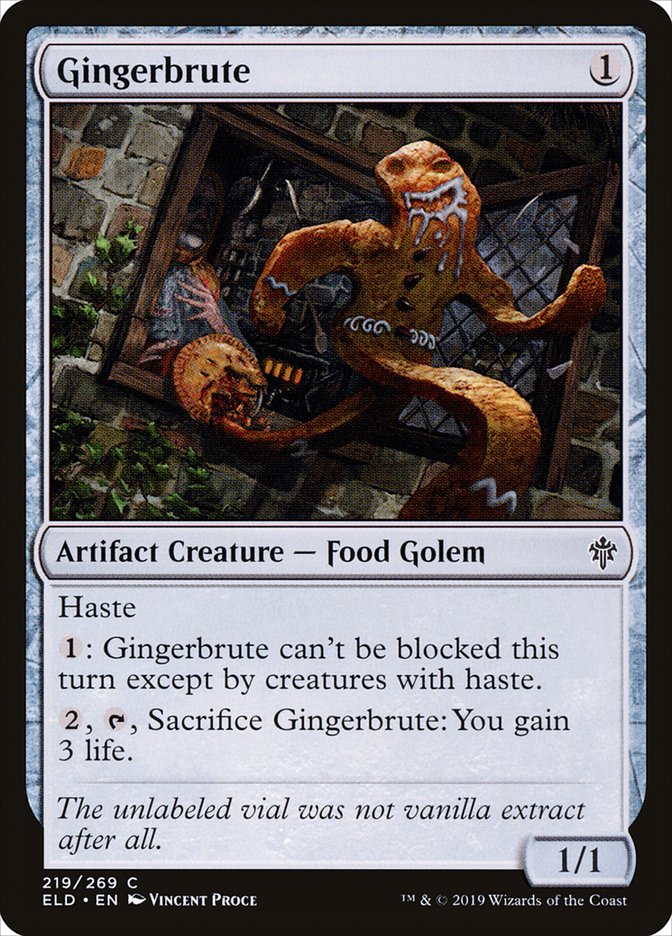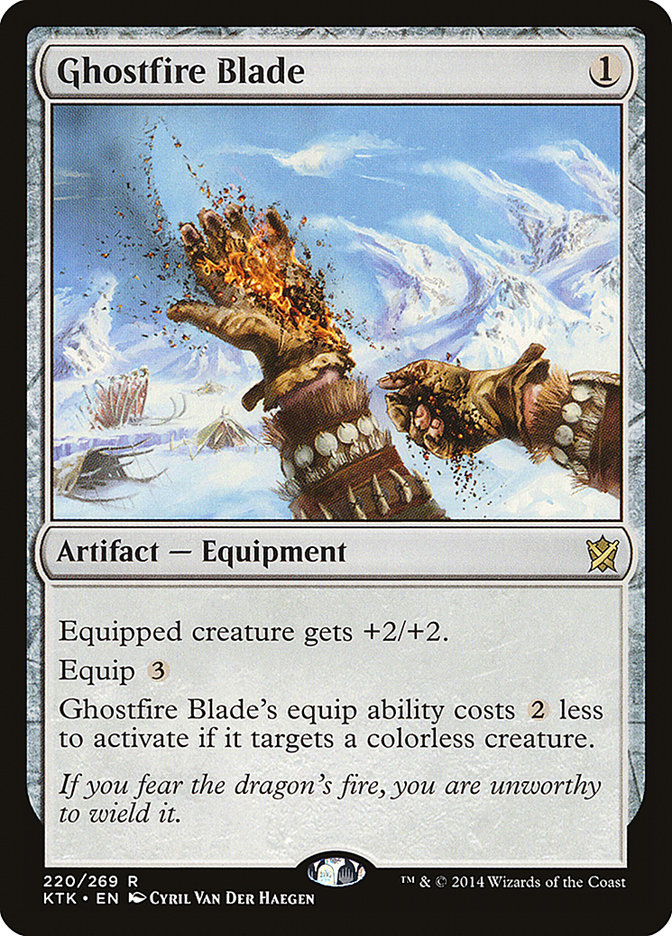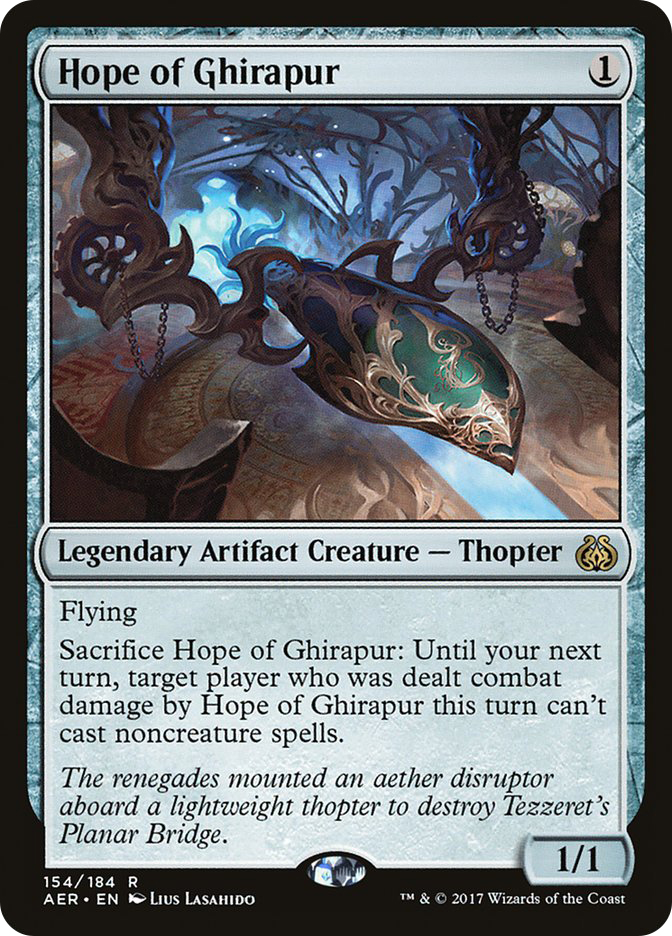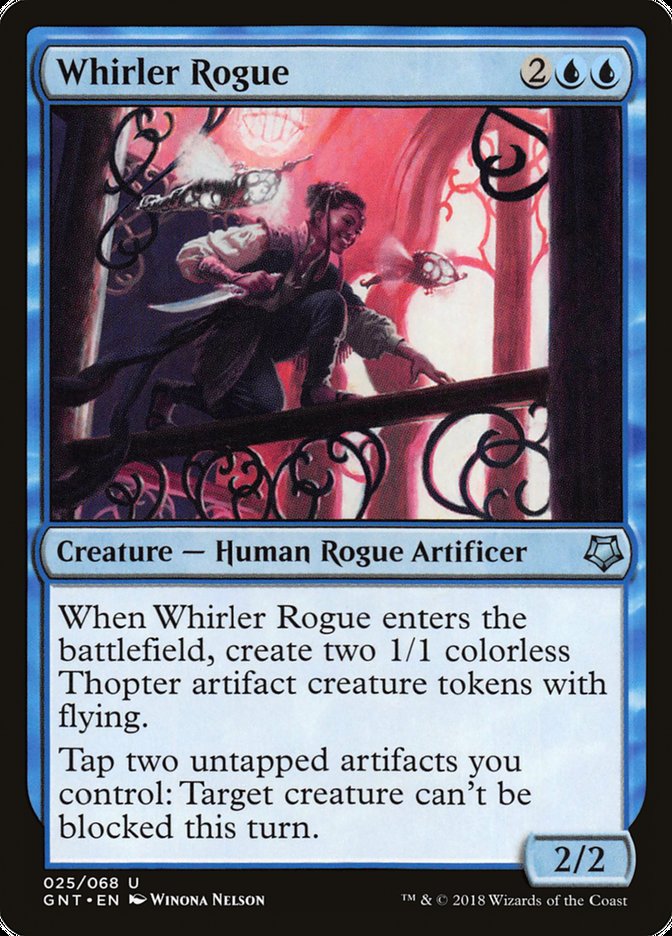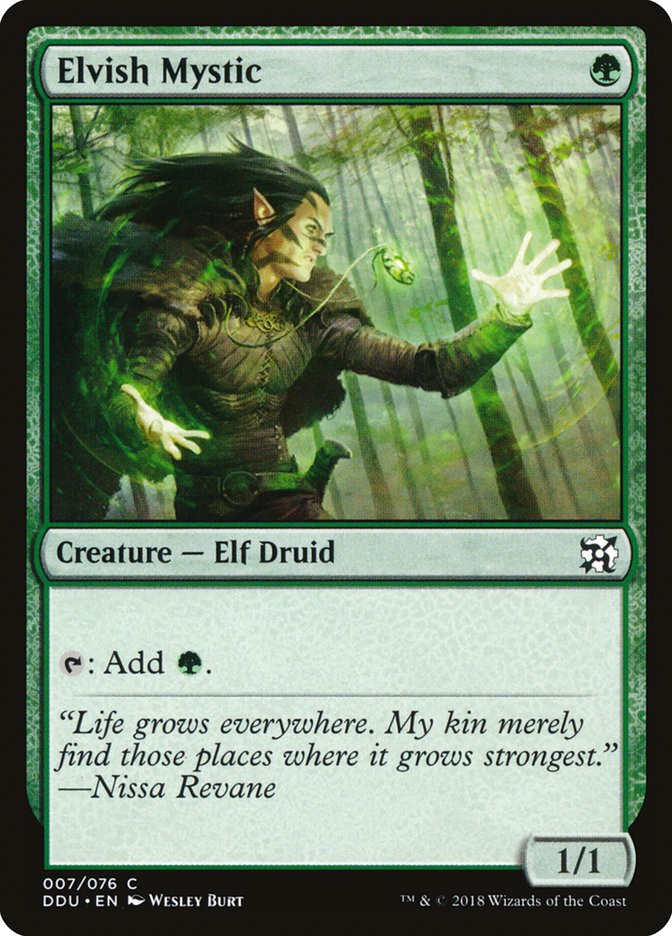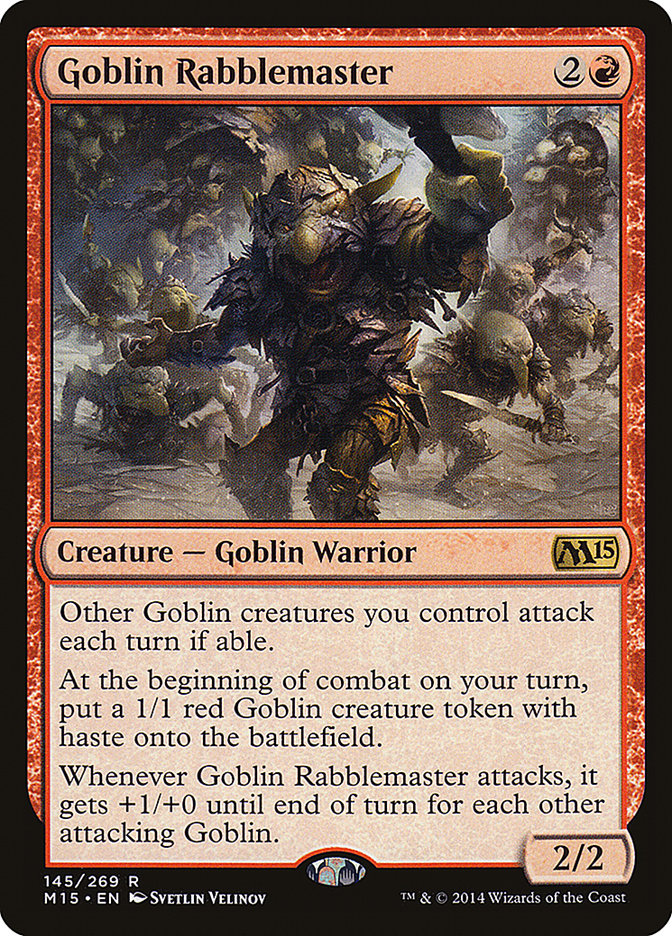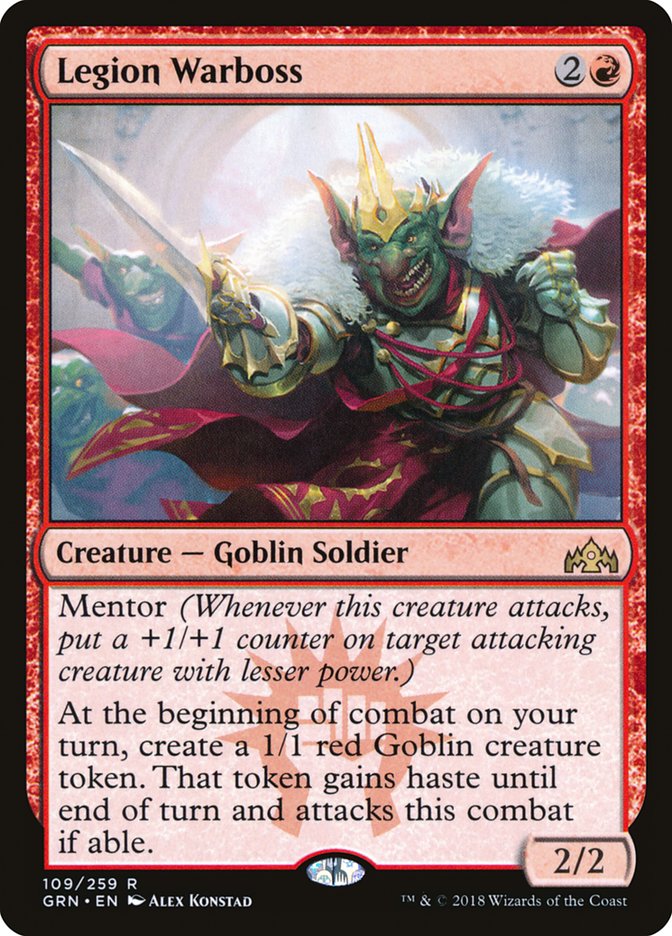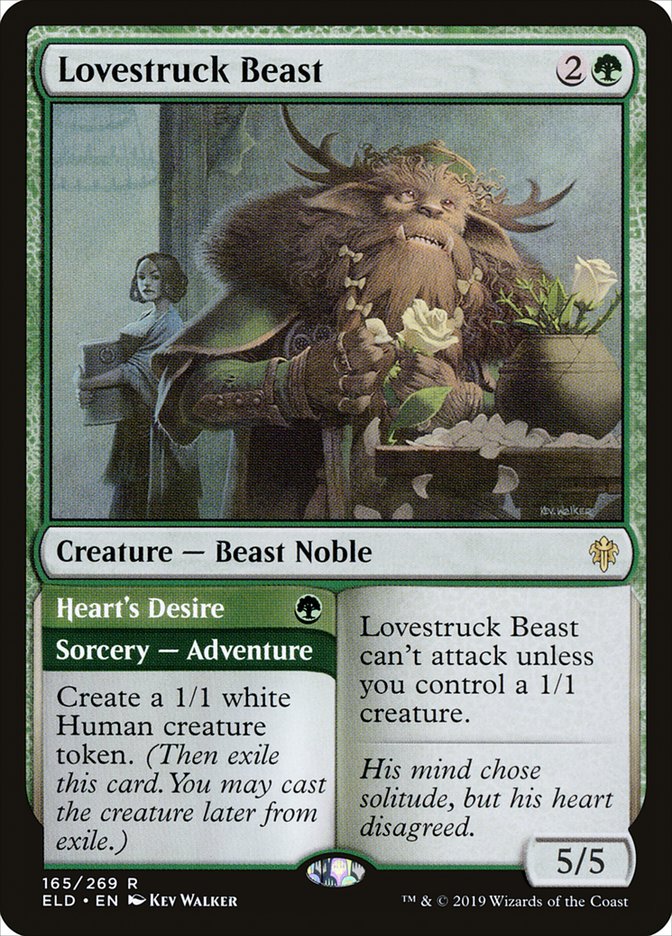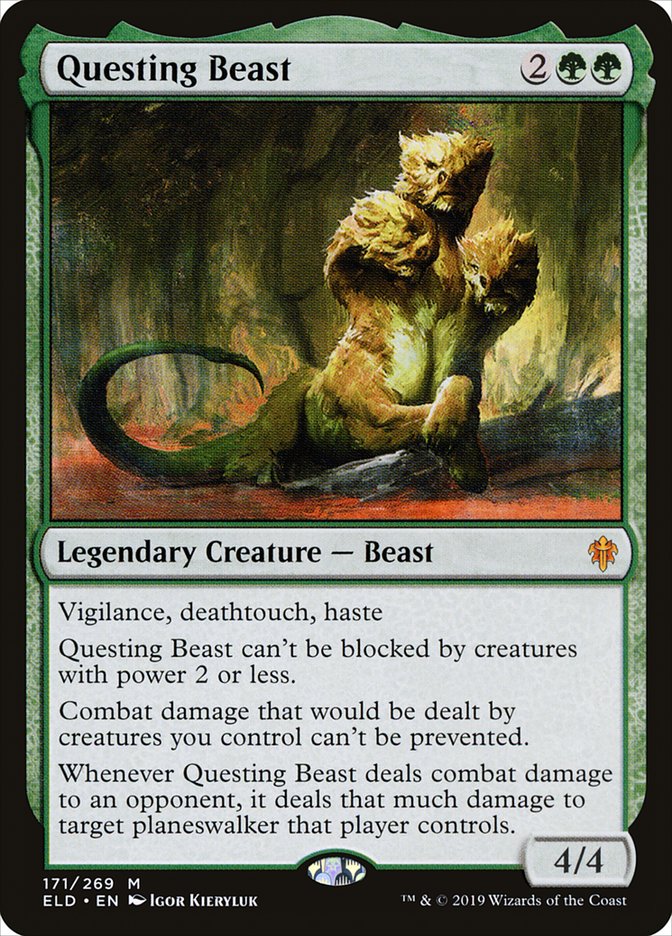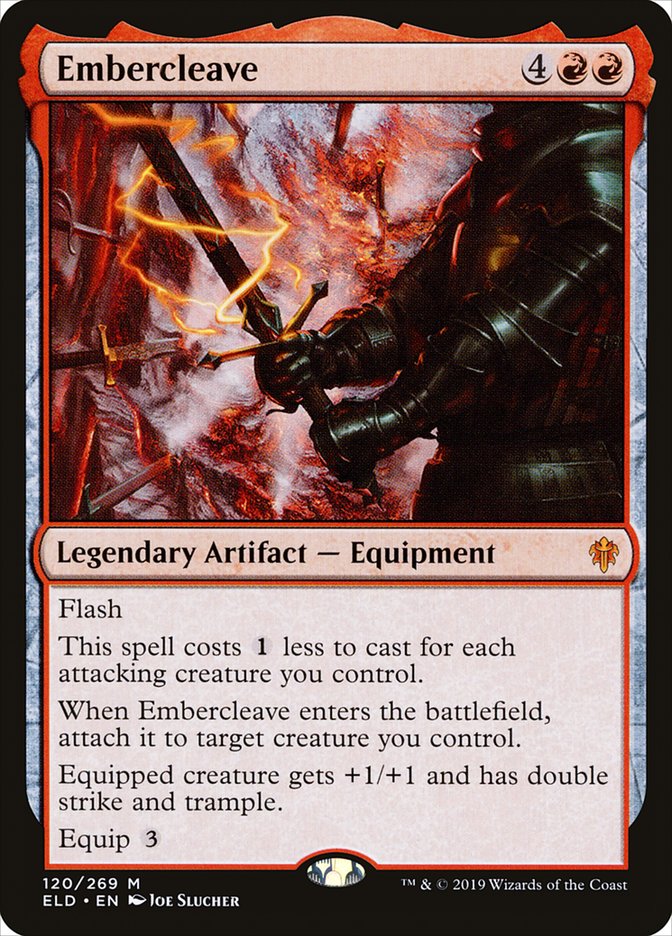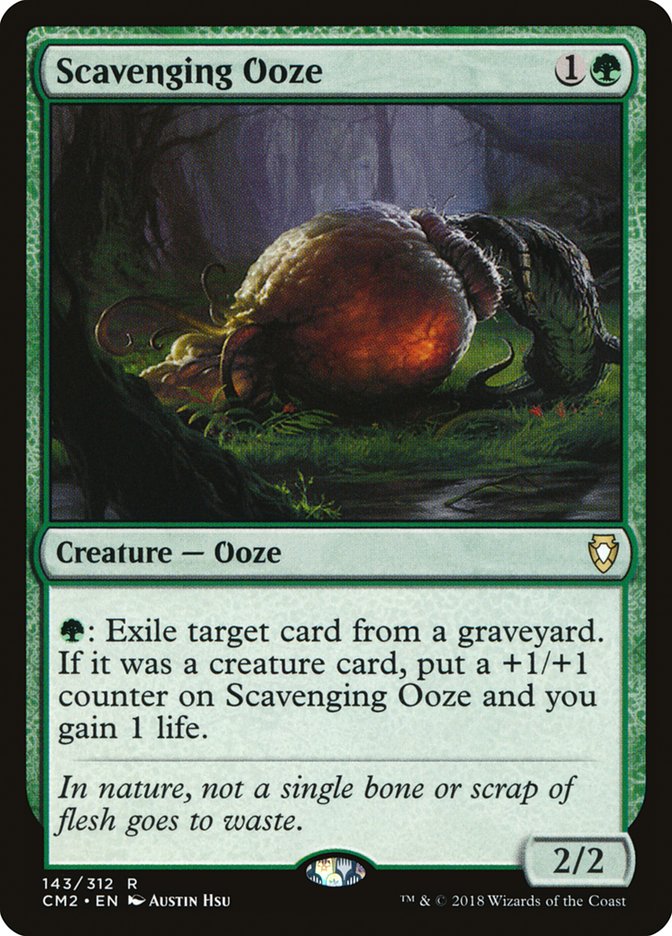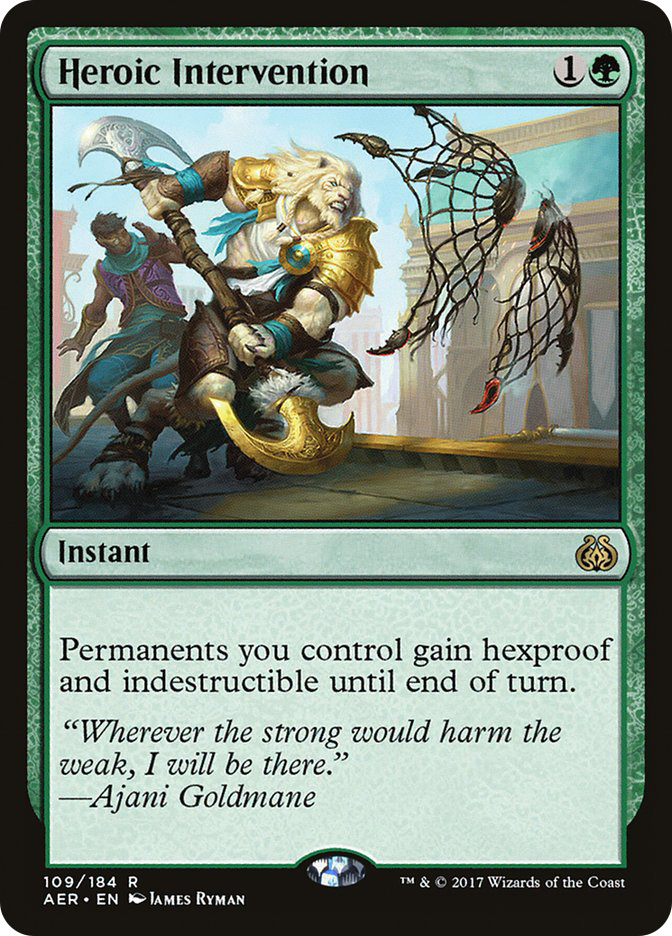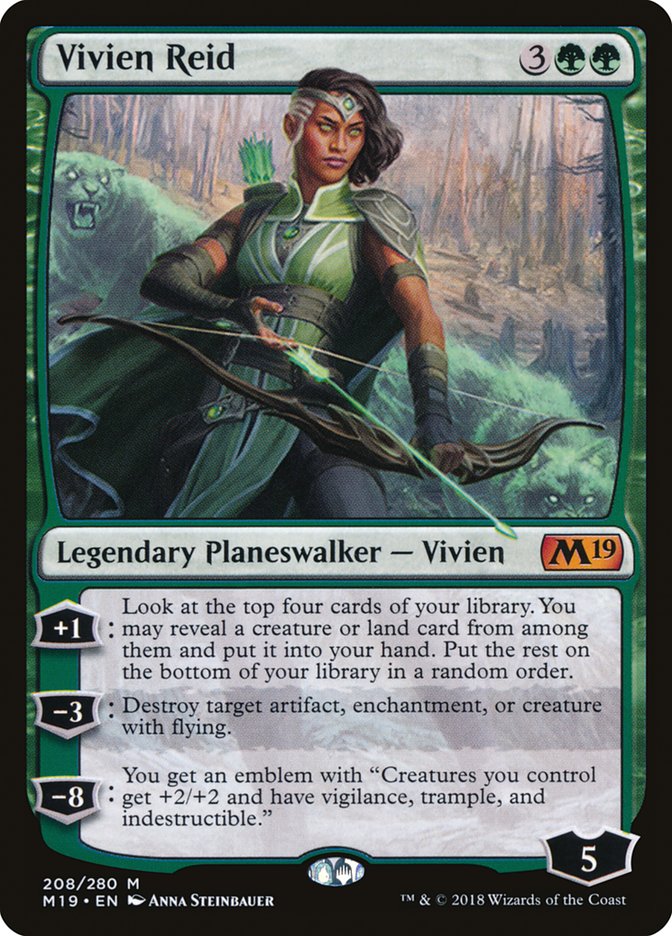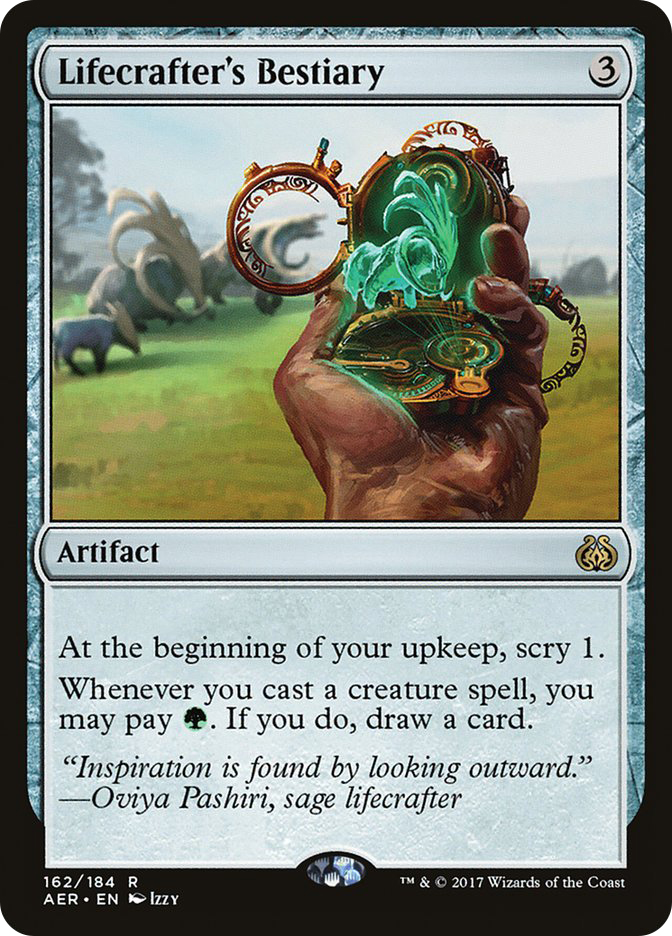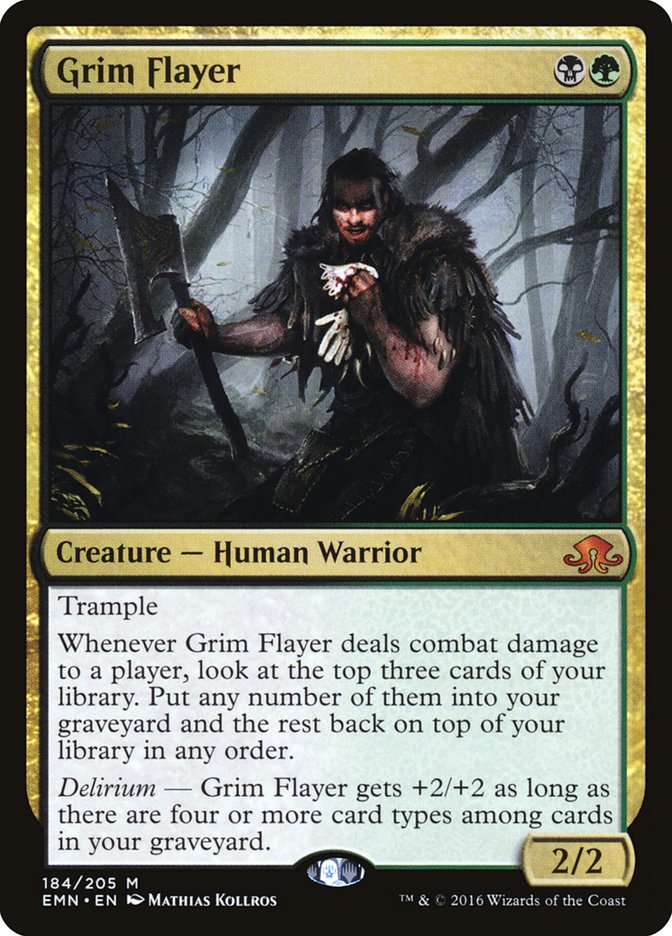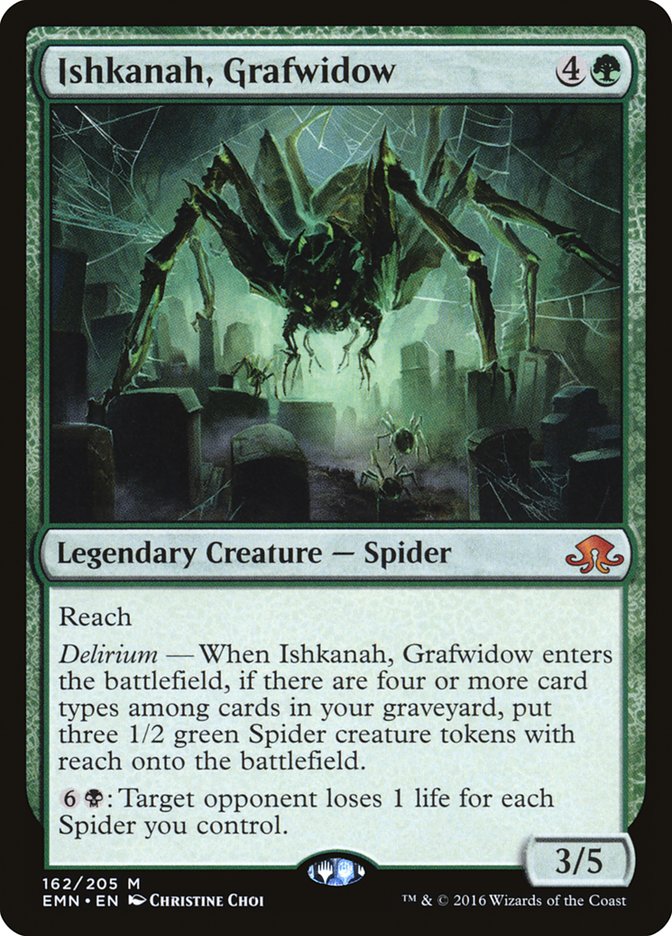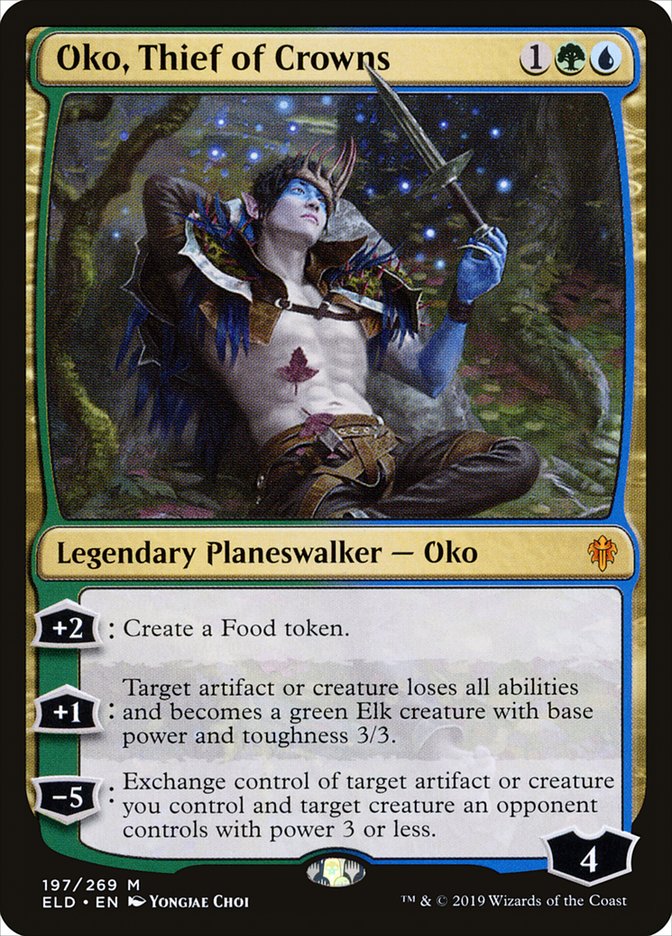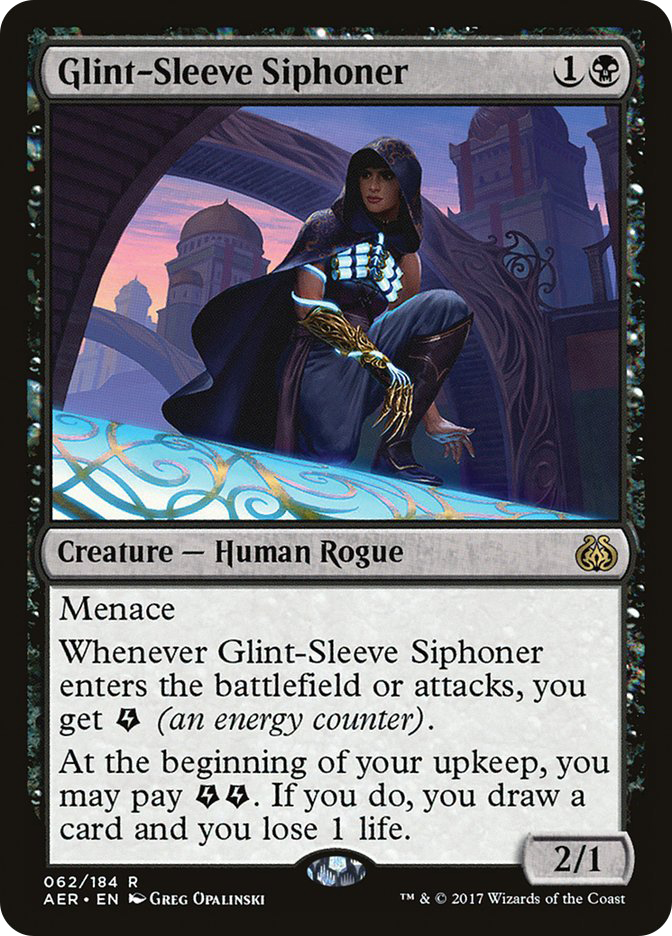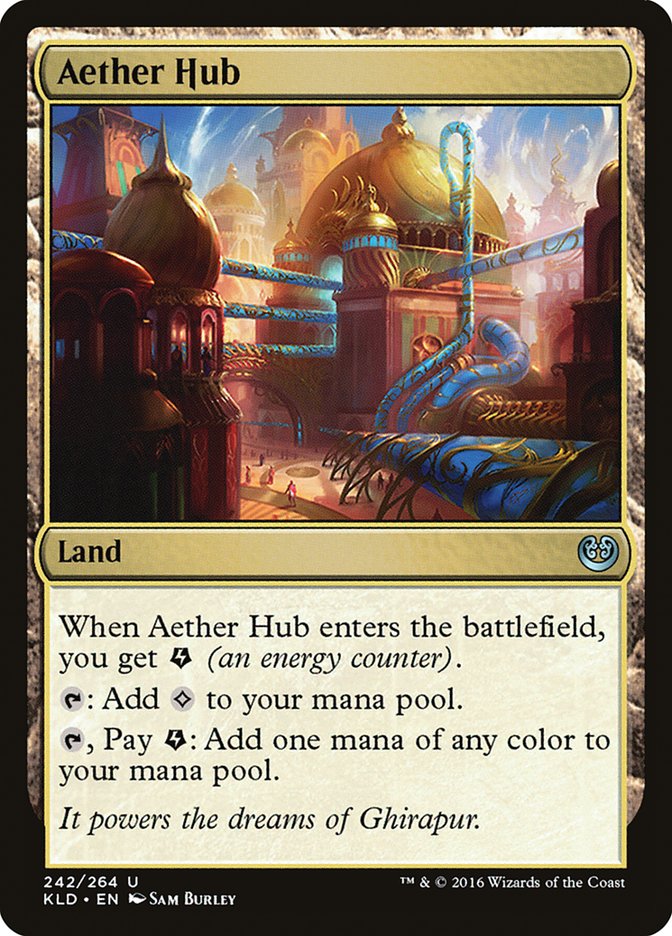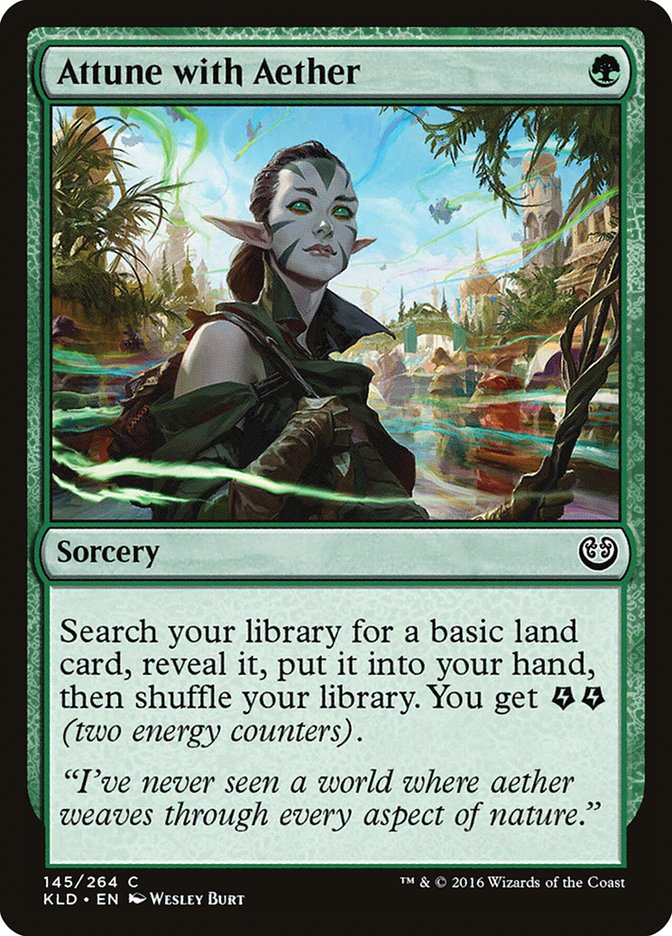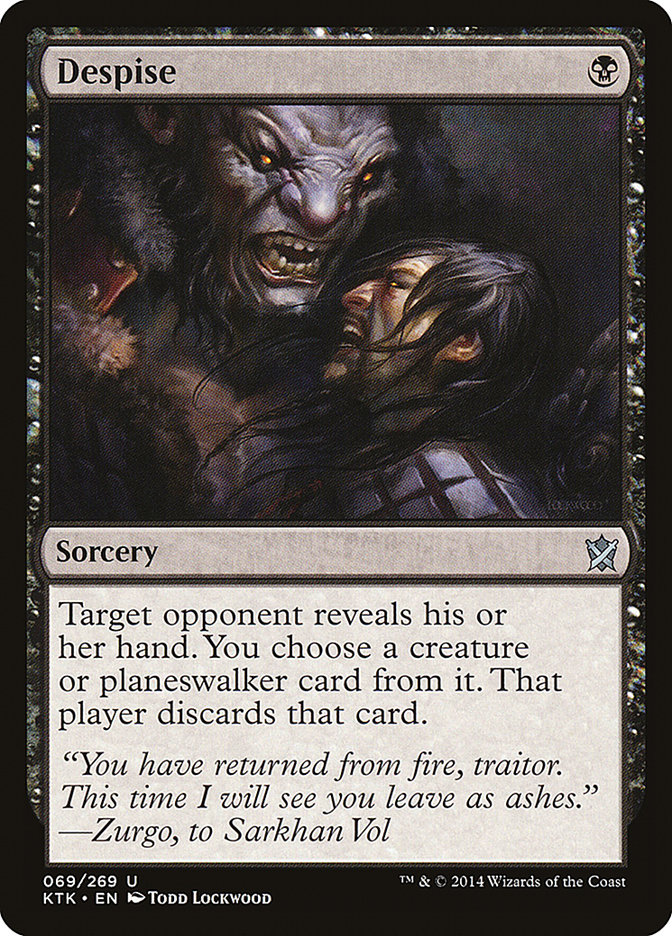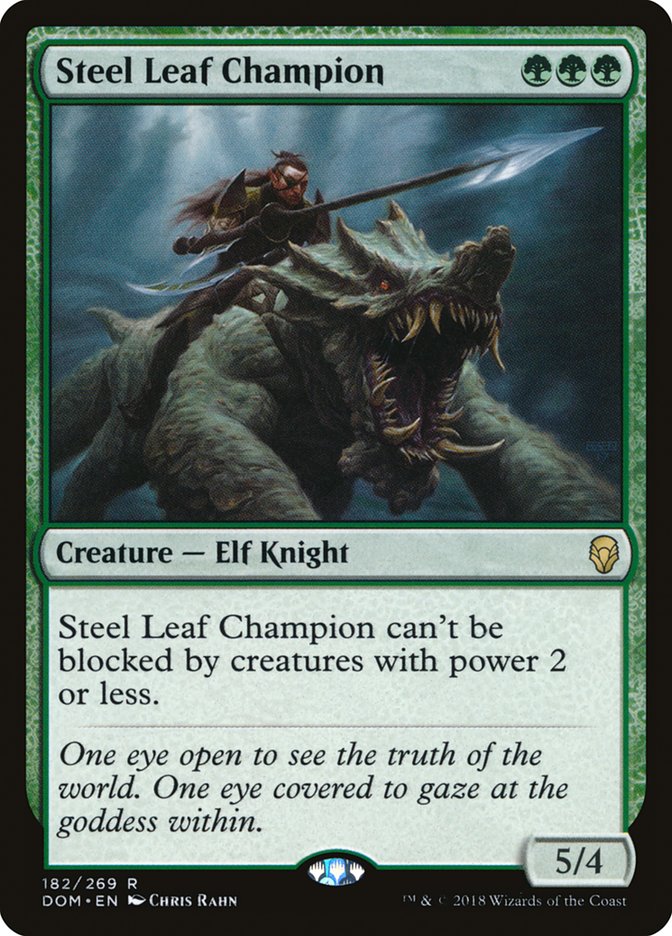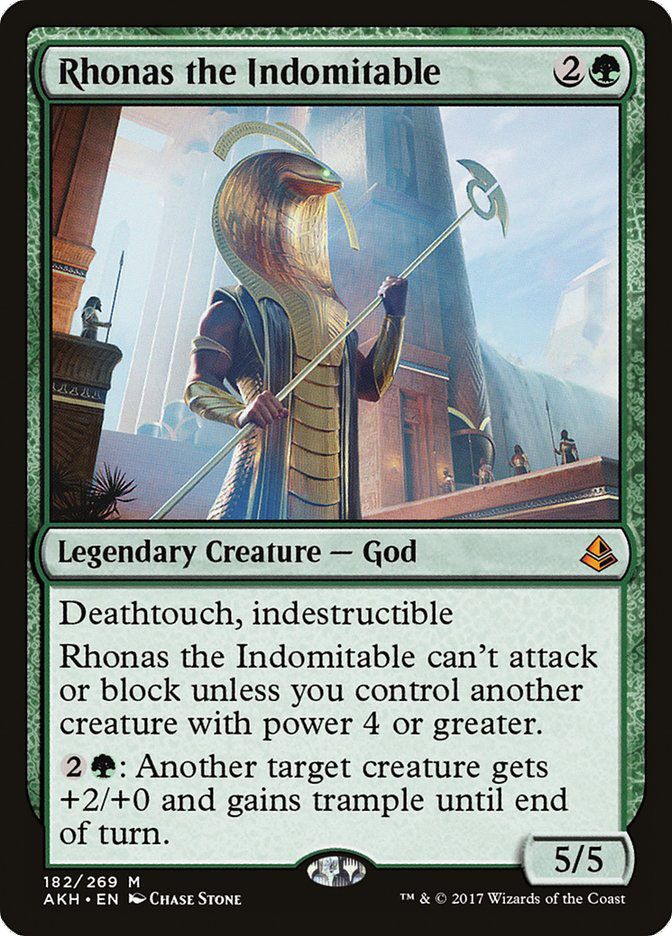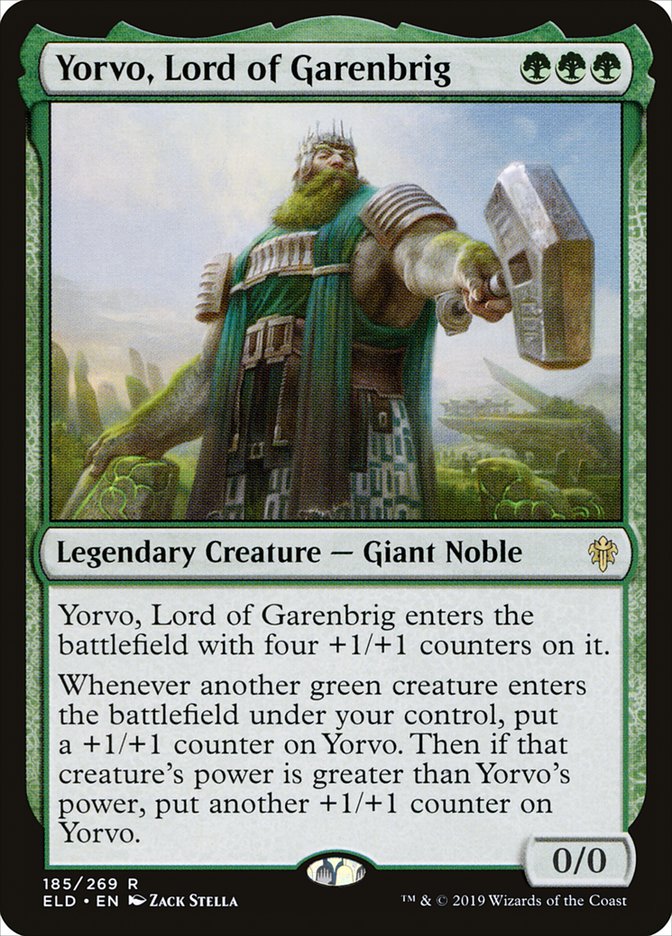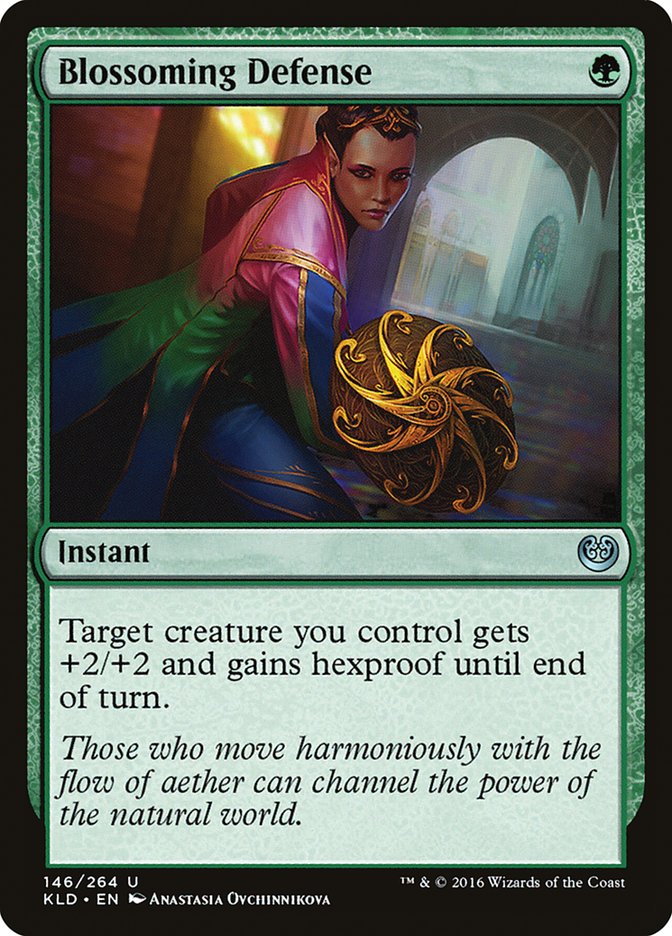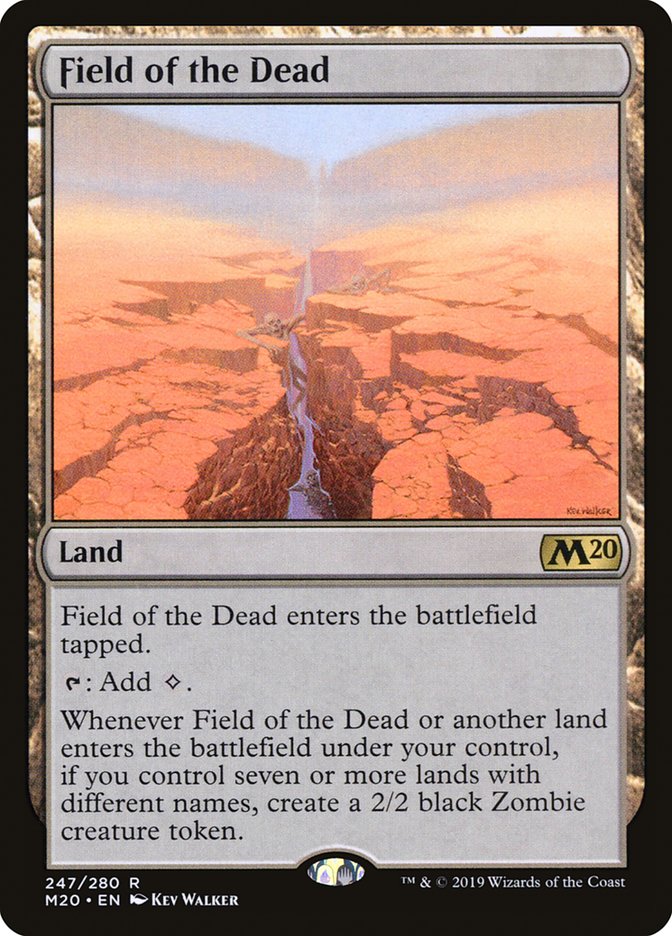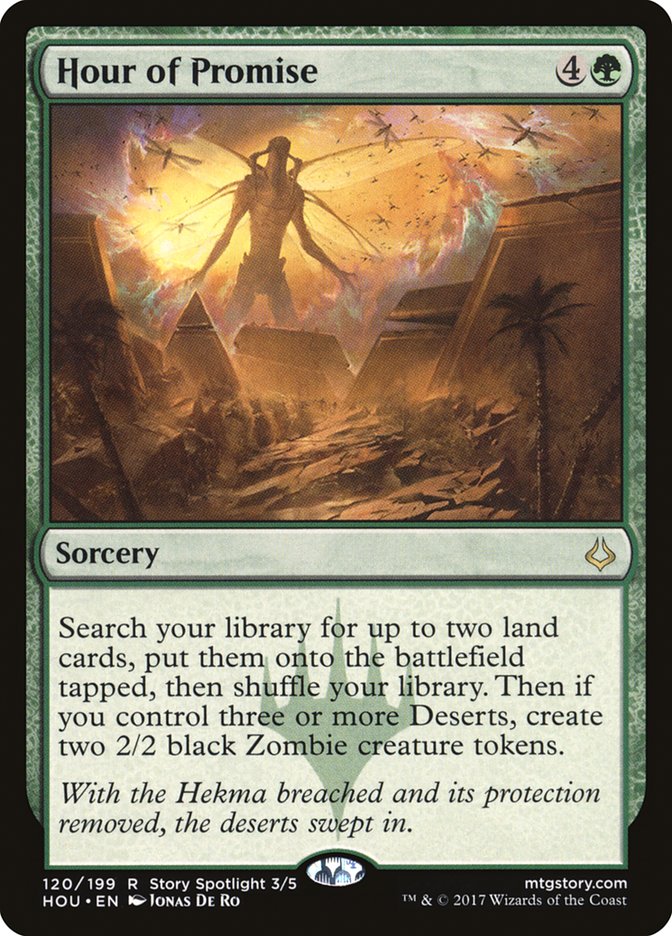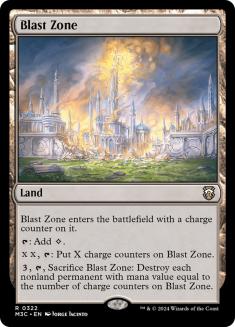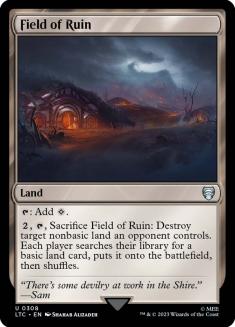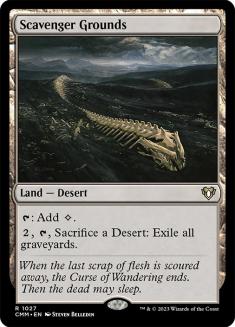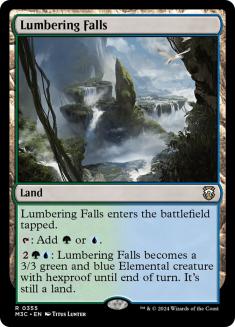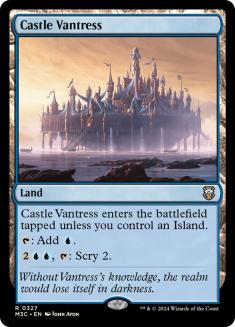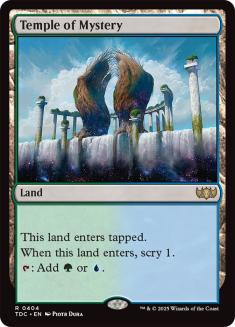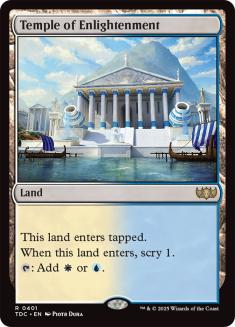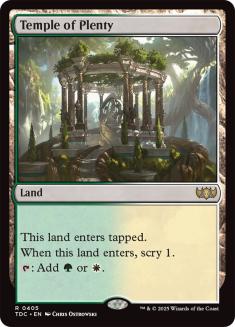With two weeks of bans in the books, there’s been a lot of speculation about what’ll be next to go in Pioneer. One popular theory seems to be that Smuggler’s Copter’s days are numbered.
Okay, it was banned in Standard, and pretty quickly. That’s fair. The thing is, the card is actually super-fun and promotes a lot of good stuff. It’s a real shame that there’s no format for it, or at least wasn’t until Pioneer. To me, Smuggler’s Copter is the epitome of the kind of card they’d like to see be a power card in Pioneer, a pillar that gets every pass you can possibly give it.
The goal of banning cards in Pioneer isn’t to just ban the best card every week. The whole point is to develop the format into a novel landscape filled with a diverse mix of fun experiences, a place where Standard decks that would have rotated out can go on to have new life breathed into them. I think it’s fair to say that they’ll try to keep as many fun power cards with no other home as possible.
Will Treasure Cruise and Dig Through Time actually stick around long-term?
I think Wizards will do a fair bit to try to preserve one or both of them. I mean, if the format without fetchlands can’t keep Treasure Cruise and Dig Through Time, I guess nobody can.
They might not be able to, and that’s okay. It’s not like it’s worth letting the format develop into something unfun just to try to preserve them. I’m not at all sure that they take the format there, though. I mean, on their own, they are pretty fun cards; and so far, at least, they don’t seem to be particularly problematic, compared to the other powerful stuff you can do. That might change as more cards get banned and as new strategies that maximize the unusual card pool available in Pioneer are developed.
The initial bans have led to a world where Smuggler’s Copter is a linchpin to lots of different successful decks. That’s not a bad thing, and it’s definitely not like these decks are all the same or anything, nor have any of them proven busted.
First off, tip of the cap to this weekend’s champion, Chris Barone. His weapon of choice in Pioneer? Mono-Black Aggro with Smuggler’s Copter:
Creatures (24)
- 4 Bloodsoaked Champion
- 4 Scrapheap Scrounger
- 4 Night Market Lookout
- 1 Gutterbones
- 4 Knight of the Ebon Legion
- 3 Rankle, Master of Pranks
- 4 Murderous Rider
Lands (24)
Spells (12)

Barone’s list is a great example of the new breed of Mono-Black Aggro that abandons the Nykthos, Shrine to Nyx / Gray Merchant of Asphodel / Sorin, Imperious Bloodlord package.
Instead, it focuses on having a great curve and a fantastic manabase. Not only are we very unlikely to miss the colored mana we need, the use of four Mutavaults and four Castle Locthwains means we’ve got a lot of extra gas coming from our lands, in case we need to power through removal or cast a Rankle, Master of Pranks.
Why black aggro instead of red aggro or white aggro? It’s not like black is the only color with good one-drops or anything, and while Castle Locthwain is good, the other colors have some nice nonbasic lands, too.
First and foremost, black aggro has access to Thoughtseize, which is arguably the best piece of interaction in the format. There just isn’t a comparable option for white or red when it comes to disrupting combo decks and making life hard for control.
Additionally, Fatal Push and Murderous Rider are two of the best removal spells in the format, and both play great in this list. Fatal Push can provide excellent tempo, and using it alongside Smuggler’s Copter and so many cheap creatures means it’s very reliably going to be able to kill three- and four-drops. Murderous Rider stacks with Thoughtseize quite well, ensuring a consistent ability to blank text boxes and solve most problems. Murderous Rider is especially strong with how many of the best cards are planeswalkers.
Black also gives us access to one of the better sideboard cards in the format, Noxious Grasp. The card is a very efficient answer to a big range of powerful cards and strategies, and with Veil of Summer banned, its stock is only rising.
Legion’s End and Collective Brutality further allow for sideboard tuning. Legion’s End is especially effective against tokens and stuff like Scrapheap Scrounger (which happens to be another of the more powerful cards in the format and well-utilized here). Collective Brutality is a bit of slot efficiency. It’s not the best removal for the job most of the time, but it gets the job done against fast aggressive decks. Meanwhile, it’s also a discard spell that can be brought in against some combo and control decks, making sure we don’t get stuck with Fatal Push in our deck.
Maxing on Night Market Lookout over Gutterbones is clearly a decision based on the powerful Lookout/Copter combo. It may seem like a relatively small deal, but when both are primarily just two points a turn, it’s not unreasonable to think that the extra reach provided by the Lookout, along with just generally increasing the damage output of a Copter, could be worth it.
When it comes to powerful sideboard cards, it’s hard to find many in the same league as Leyline of the Void. The format hasn’t proven itself supersaturated with graveyard decks yet, but the combination of Emry, Lurker of the Loch; Rally the Ancestors; Arclight Phoenix; and cards with mechanics like delirium and delve all add up to make Leyline of the Void a solid bet.
That said, ninth-place finisher Kellen Pastore piloted a very similar list, but one opting for Blightbeetle and Fourth Bridge Prowler instead of Leylines.
Creatures (23)
- 4 Bloodsoaked Champion
- 4 Scrapheap Scrounger
- 4 Night Market Lookout
- 1 Gutterbones
- 4 Knight of the Ebon Legion
- 3 Rankle, Master of Pranks
- 3 Murderous Rider
Lands (24)
Spells (13)

It’s an interesting pivot, and one that pretty loudly aims for Hardened Scales decks and Mono-Green. Personally, I’m still on the Leylines, but I do think there’s a place for Blightbeetle, particularly if Hardened Scales continues to put up good numbers.
This week’s top-finishing Hardened Scales player was Kevin Hoang with some Blightbeetles of his own (gotta win that mirror match).
Creatures (25)
- 4 Experiment One
- 2 Hangarback Walker
- 4 Winding Constrictor
- 1 Rishkar, Peema Renegade
- 4 Walking Ballista
- 4 Pelt Collector
- 2 Voracious Hydra
- 4 Stonecoil Serpent
Planeswalkers (5)
Lands (22)
Spells (8)

The combination of Pelt Collector and Experiment One means this deck is coming out of the gates harder than basically any other aggro deck, and that’s to say nothing of drawing actual Hardened Scales.
One feature I found interesting was the use of just two maindeck Hangarback Walker, ensuring extra room for some slightly bigger cards.
Maybe it’s right to play such a diverse mix of these threats. They’re certainly all on plan, with each interacting with +1/+1 counters. Historically, however, this sort of approach frequently ends up eventually collapsing down into less diverse a spread as the format matures and which threat is optimal becomes better understood.
I guess, to be fair, Once Upon a Time does sort of add extra value to a diversity of big cards. Still, we sure are looking to find Winding Constrictor whenever possible. This deck is far from the only deck to use Once Upon a Time, despite it not really contributing anything to the strategy beyond making it much more consistent at everything it does. I get that Once Upon a Time is new, but it’s so strong and warping and variance-reducing, not to mention having plenty of life in other formats; I suspect Once Upon a Time has got to be pretty high on the list of cards likely to get banned eventually.
One threat we never see shaved in decks like this is Stonecoil Serpent. It’s a mediocre threat early, if you need one, and it is on-plan. Its real value, of course, comes from giving you a way to sink extra mana into a threat. The abilities may seem random, but they do come up, especially the protection from multicolored, sometimes making Abrupt Decay, Assassin’s Trophy, or Deafening Clarion particularly awkward.
Hardened Scales isn’t the only “aggro” deck running Stonecoil Serpent. Noah Walker made the Top 8 with his take on Izzet Ensoul.
Ensoul Artifact decks represent the other half of the descendants of Affinity, using aggressive artifact creatures that let the deck’s namesake sort of function as a 5/5 haste creature for two. Remember, any +1/+1 counters are applied after the 5/5 base, so a Turn 1 Stonecoil Serpent followed by a Turn 2 Ensoul Artifact is a 6/6 trample, reach, protection from multicolored threat.
Darksteel Citadel is an especially juicy target, since it becomes a 5/5 indestructible creature when Ensouled.
Skilled Animator is slower than Ensoul Artifact and more fragile, but it’s nice to have more than four copies of this effect and it’s worth paying a premium for the extras.
Creatures (19)
Lands (19)
Spells (22)

It’s a shame we don’t have anything better than Wild Slash, but at least Shrapnel Blast and Metallic Rebuke are hot.
I do appreciate the value of Bomat Courier and lesser Bomat Courier in this format with a relatively lower amount of removal seeing play.
Having so many haste threats means we’re usually going to be able to sneak in at least five with each of our Ensouls and Animators.
Increasing the deck’s reliance on artifacts, Ghostfire Blade does give extra value to our numerous artifact creatures and ensures more ability to power through sweepers or bigger creatures.
I could easily imagine Hope of Ghirapur and Whirler Rogue eventually being replaced with better options as the strategy gains maturity. For now, at least they are on-theme adjacent and provide a little extra reach. I can’t help but feel like this deck is good, yet one forgotten card of technology and one newly printed synergy card away from total greatness.
That’s a fair number of Smuggler’s Copter decks already, and we haven’t touched on them all yet. Sam Berkenbile’s Gruul Aggro deck uses Smuggler’s Copter decidedly fairly, capitalizing on the extra 1/1 Goblin tokens and one-drop Elves it’s always got lying around.
Creatures (25)
- 4 Llanowar Elves
- 2 Ghor-Clan Rampager
- 4 Elvish Mystic
- 4 Goblin Rabblemaster
- 4 Legion Warboss
- 4 Lovestruck Beast
- 3 Questing Beast
Lands (21)
Spells (14)

With both Elvish Mystic and Llanowar Elves on Turn 1, along with all the Once Upon a Times, this list starts the big majority of games the same way.
The consistent one-drop on Turn 1 is followed by a nearly equally consistent Rabblemaster or Warboss on Turn 2.
These two are among the most snowbally threats you can cast and dropping them on Turn 2 in a format with a relatively scarce supply of removal is a gameplan all on its own.
Finally, to keep the pressure on, we’ve got some powerful “four-drops” that bring with them high rates and big bodies, attempting to out-muscle other creature decks. Besides, somebody’s got to carry the Embercleave…
While this list is sweet, it’s far from the only home for Elvish Mystic and Llanowar Elves. One of the format’s biggest boogeymen, Mono-Green Devotion, has already been hit by three bans and still looks to be one of the defining decks of the format. This weekend, we saw two in the Top 4, with plenty of other strong showings throughout.
Creatures (27)
- 4 Llanowar Elves
- 3 Scavenging Ooze
- 4 Burning-Tree Emissary
- 4 Elvish Mystic
- 4 Walking Ballista
- 4 Jadelight Ranger
- 4 Voracious Hydra
Planeswalkers (8)
Lands (21)
Spells (4)

Leyline of Abundance appears to have been replaced by Vivien, Arkbow Ranger (who conveniently requires triple green for hot green devotion action).
Oath of Nissa, on the other hand, seems to have been replaced with a combination of Scavenging Ooze and extra Forests, which seems reasonable, if somewhat tame.
Finally, Shapers’ Sanctuary replaces the no-longer-legal Veil of Summer as the anti-permission weapon of choice. It’s not that every deck with Veil of Summer needs to replace it with anti-permission stuff, but this mono-green deck has a lot of mana, with a much lower supply of threats. It’s important to have something to make sure you aren’t picked apart by someone’s control deck.
Dan Salvatore’s third-place list was largely the same, but Heroic Intervention picked up some of the Veil of Summer space, aiming to fight removal instead of permission (especially sweepers).
Creatures (27)
- 4 Llanowar Elves
- 2 Scavenging Ooze
- 4 Burning-Tree Emissary
- 4 Elvish Mystic
- 4 Walking Ballista
- 4 Jadelight Ranger
- 4 Voracious Hydra
- 1 Questing Beast
Planeswalkers (8)
Lands (6)
Spells (19)

Yeah, that’s right, Vivien Reid in the sideboard, for when you need even more Vivien in your life.
It seems a little slow, but I generally agree with having more noncreature forms of card advantage in the sideboard. Maybe it’s the best one, but I’m still kind of a sucker for Lifecrafter’s Bestiary.
Green and black continue to be a fair bit ahead of the other colors, with green having a deep well of powerful cards and strong draw smoothing from cards like Once Upon a Time. Black, on the other hand, really is built around Thoughtseize, though its removal is also nice and it has a diverse mix of solid cards at basically every cost and niche.
Stephen Dykman’s Golgari Delirium is a nice improvement to the archetype, blending Golgari good stuff with just enough of a Traverse the Ulvenwald package to give the deck its own look and feel.
Creatures (15)
- 1 Scavenging Ooze
- 2 Courser of Kruphix
- 1 Kalitas, Traitor of Ghet
- 2 Tireless Tracker
- 1 Ishkanah, Grafwidow
- 4 Grim Flayer
- 1 Noxious Gearhulk
- 1 Walking Ballista
- 2 Murderous Rider
Planeswalkers (4)
Lands (21)
Spells (20)

Interestingly, that’s a whole lot of toolbox for just two copies of Traverse. Instead, some of that weight is being carried by Grisly Salvage, which has the advantage of having good types (instant), getting Delirium online faster, making Grim Flayer; Ishkanah, Grafwidow; and of course Traverse that much better.
Raja Sulaiman piloted a somewhat similar deck to a Top 16 finish, though his blue splash for Jace, Vryn’s Prodigy and Oko, Thief of Crowns was enough to get him to just bite the bullet and drops the delirium pretense altogether.
These are two of the best cards in the format, so I love to see them here. Still, it is not without a tinge of sadness that I lament the lack of Treasure Cruise. Instead, the extra card draw is coming from Glint-Sleeve Siphoner (with Aether Hub and Attune with Aether as the only other sources of energy).
I like the direction this list is heading. I’ll be interested to see what improvements he makes in the weeks to come.
Creatures (13)
- 2 Scavenging Ooze
- 1 Tasigur, the Golden Fang
- 2 Jace, Vryn's Prodigy
- 2 Kalitas, Traitor of Ghet
- 2 Tireless Tracker
- 4 Glint-Sleeve Siphoner
Planeswalkers (5)
Lands (21)
Spells (21)
- 2 Forest
- 1 Island
- 4 Thoughtseize
- 2 Despise
- 3 Abrupt Decay
- 2 Attune with Aether
- 4 Fatal Push
- 3 Assassin's Trophy
Sideboard

While a lot of the removal and mid-game threats were pretty well understood and popular cards, the use of Despise as Thoughtseizes five and six definitely piques my curiosity
On the Oko, Thief of Crowns tip, Jacob Segal’s Simic Aggro deck looks like another powerful new deck that might be only a tweak or two away from greatness. It’s another four Elvish Mystic, four Llanowar Elves, four Once Upon a Time deck, but with Oko, Steel Leaf Champion, Rhonas, and Yorvo instead of Goblins.
The primary gameplan here is to just put big threat after big threat on the table and try to brute-force your way to victory with only the thinnest of defenses.
Creatures (25)
- 4 Llanowar Elves
- 4 Elvish Mystic
- 2 Rhonas the Indomitable
- 4 Steel Leaf Champion
- 4 Lovestruck Beast
- 3 Questing Beast
- 2 Yorvo, Lord of Garenbrig
- 2 Brazen Borrower
Planeswalkers (6)
Lands (21)
Spells (8)

Stubborn Denial is absolutely fantastic, here, and Brazen Borrower and Oko can solve or at least help with some problems. Still, I can’t help but wonder if the next evolution of this deck involves more permission in the sideboard.
That said, I do love Blossoming Defense here. This is a versatile and efficient way to disrupt the plans of anyone aspiring to buy time against us with removal.
Finally, we come to one last Oko deck for the week, Dylan Huckabone’s Top 8 list, combining Field of the Dead and the most dread ‘walker. With an outlandish 30 (!) land, plus another sixteen mana-producers, this Bant Ramp deck truly is the heir apparent to the Primeval Titan style of ramp found in more powerful formats.
The Primeval Titan? Hour of Promise. While there aren’t enough Deserts to make Zombies from Hour itself, we’re definitely not going to be short on Zombie tokens, thanks to Field of the Dead. We’ve also got a little bit of a toolbox going, with Blast Zone, Field of Ruin, Scavenger Grounds, and Lumbering Falls for versatility.
If we need to find more threats, Castle Vantress and Temples can definitely help.
Even if we just need a couple of extra life points, we’ve got Blossoming Sands, Tranquil Cove, and Thornwood Falls. The life points may seem small, but sometimes they’re just enough to give us the extra turn we need (and we need to play a lot of different names of lands anyway for Field of the Dead).
Creatures (8)
Planeswalkers (5)
Lands (30)
- 2 Forest
- 2 Plains
- 1 Island
- 1 Temple Garden
- 1 Breeding Pool
- 1 Hallowed Fountain
- 1 Glacial Fortress
- 1 Sunpetal Grove
- 1 Hinterland Harbor
- 1 Temple of Mystery
- 1 Temple of Enlightenment
- 1 Temple of Plenty
- 1 Tranquil Cove
- 1 Thornwood Falls
- 1 Blossoming Sands
- 1 Lumbering Falls
- 1 Botanical Sanctum
- 1 Irrigated Farmland
- 1 Scattered Groves
- 1 Scavenger Grounds
- 1 Field of Ruin
- 1 Blast Zone
- 4 Field of the Dead
- 1 Castle Vantress
- 1 Fabled Passage
Spells (17)

This deck could definitely be effectively targeted if it rose to too great a prominence, but for now, it definitely benefits from how many of the best hate cards against it are relatively narrow in this format, and unlikely to see wide adoption without a specific reason.
While I would understand if they ended up deciding to ban Smuggler’s Copter, I’m definitely hopeful that it doesn’t go that way. Instead, I’d give a good hard look to Once Upon a Time, a card with plenty of other formats to dominate, that really contributes to the intense consistency of green decks, and one of the biggest reasons green has been head and shoulders the best color in Pioneer thus far.
Unlike many of the cards people discuss banning, hitting Once Upon a Time doesn’t kill any archetypes. Instead, it forces them to play a more diverse mix of cards and have to rely on backup plans a little more often… especially the “backup plan” of not always having an Elf on Turn 1.



